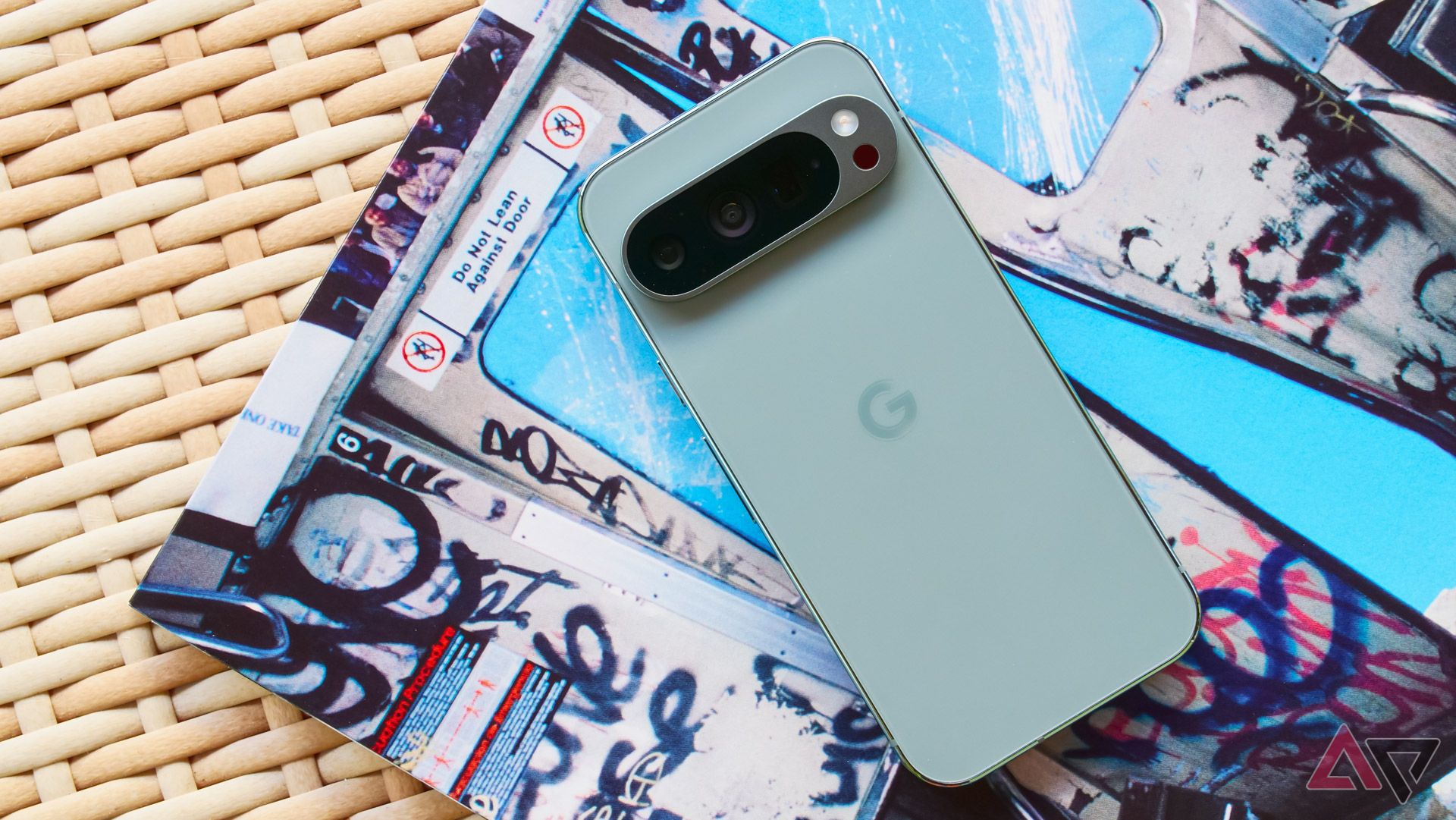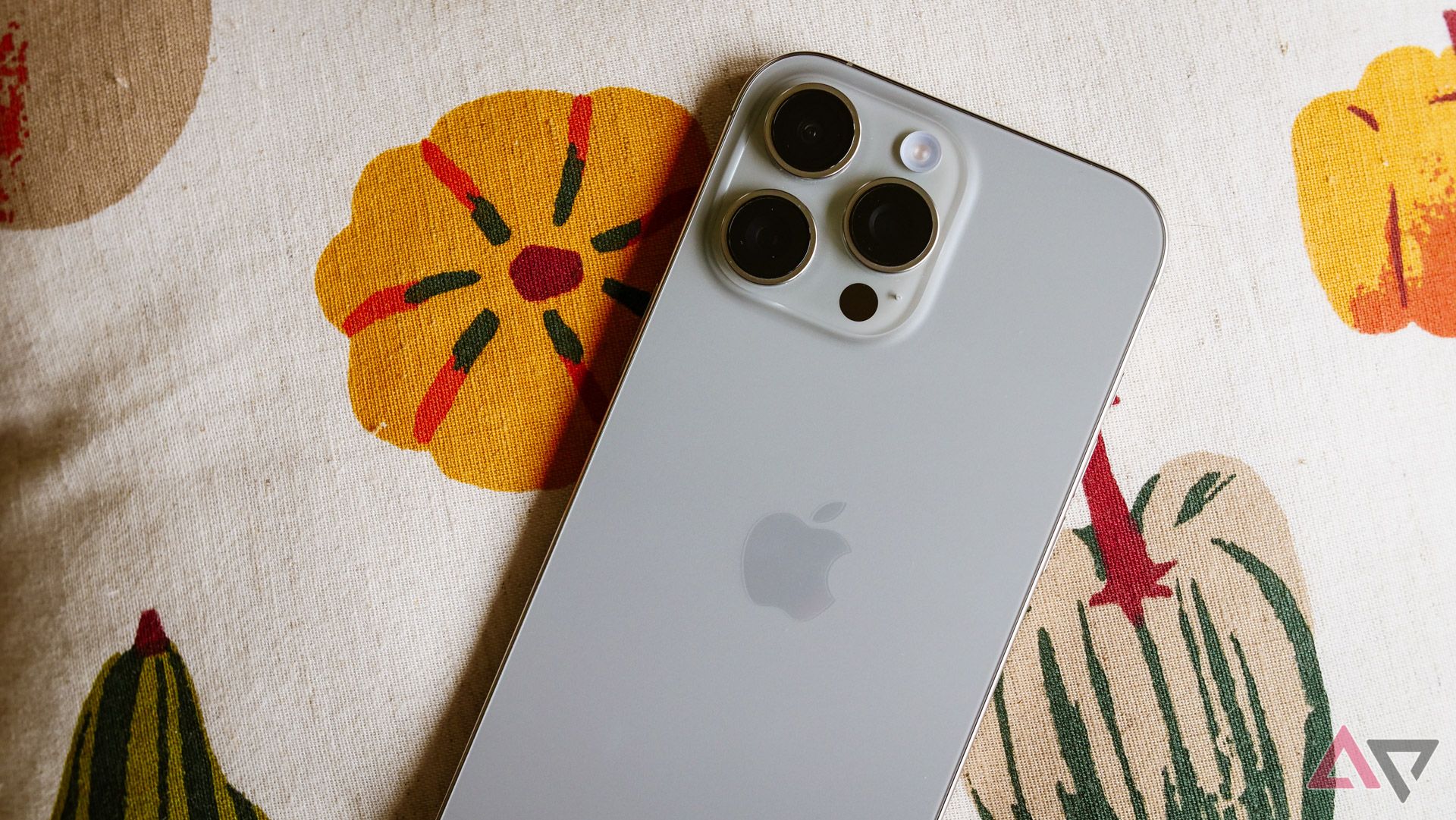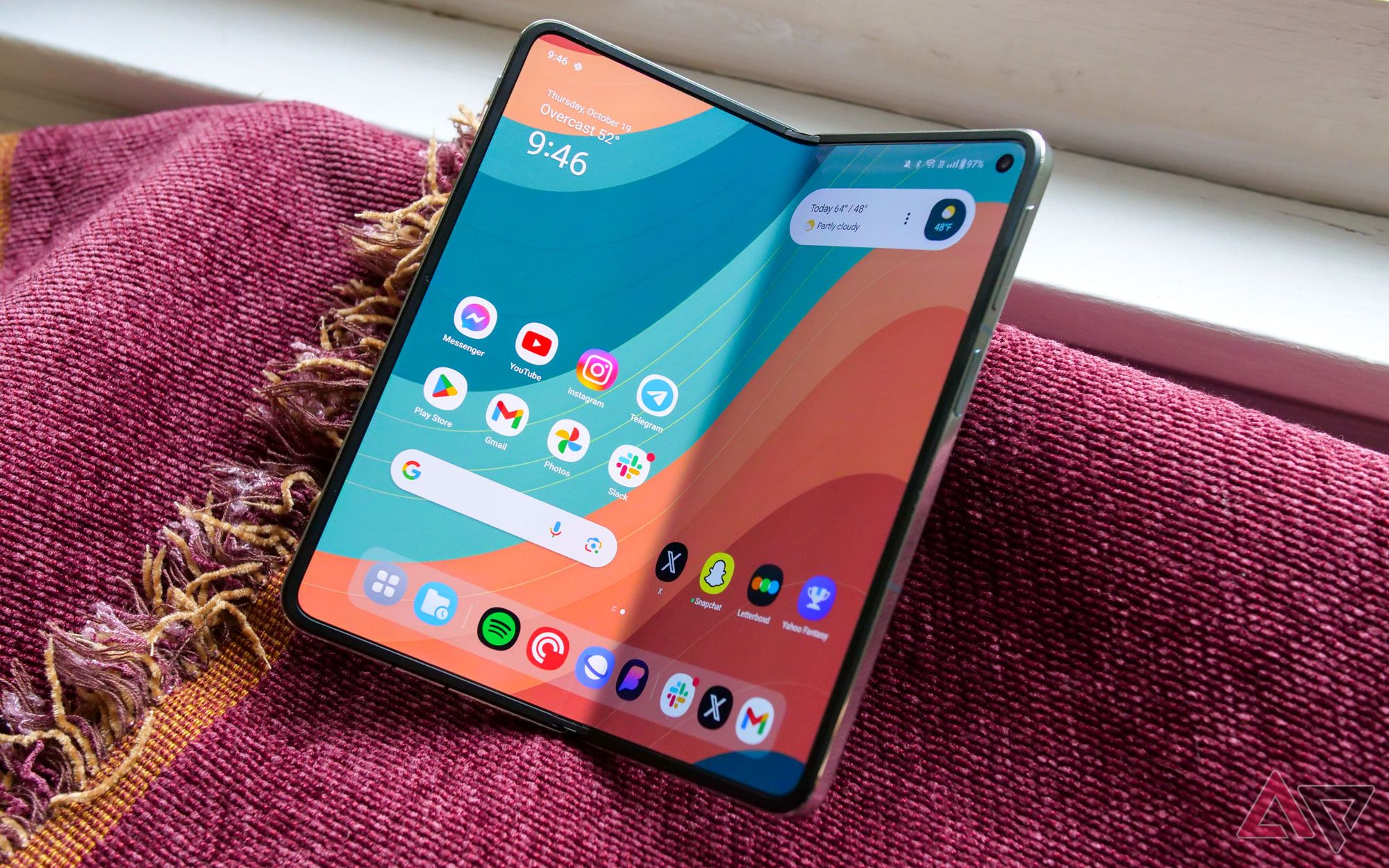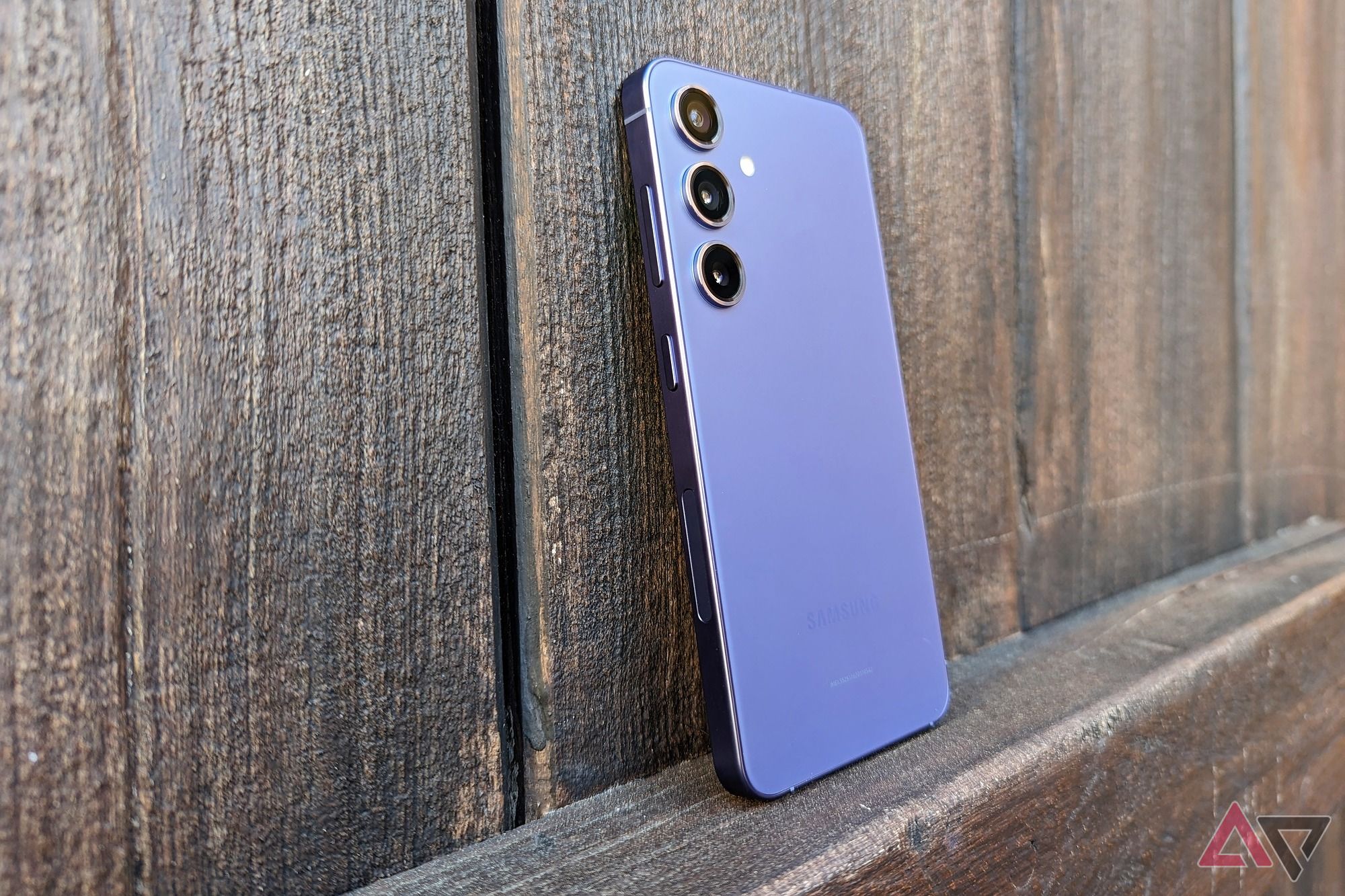In the early days of smartphones, photographer Chase Jarvis coined the phrase, “The best camera is the one that’s with you.” Over the past 15 years, smartphone makers have ensured that’s as true as possible, all but eliminating traditional point-and-shoot cameras from the market. The best Android phones now lead with the best cameras, and it’s often their photographic capabilities that drive year-over-year improvements more than anything else.
No Thanks, Keep Reading
Since smartphones utilize the massive lenses of DSLR cameras, companies like Google, Samsung, Apple, and others have developed clever techniques to get better images out of smaller and thinner pieces of glass. From computational photography that uses AI and machine learning for image processing to more sophisticated sensor technologies that capture more light than ever, today’s smartphones can produce stunning photos and videos.
However, these advanced methods often produce results that, while equally good in objective terms, may not appeal to everyone’s tastes. This can make it challenging to choose the right camera phone, so it’s essential to look at the features each one offers and how it processes photos to find one that suits your needs. We’ve rounded up a selection of the best camera phones available today in a list that should offer something for everyone.
Top camera phones right now
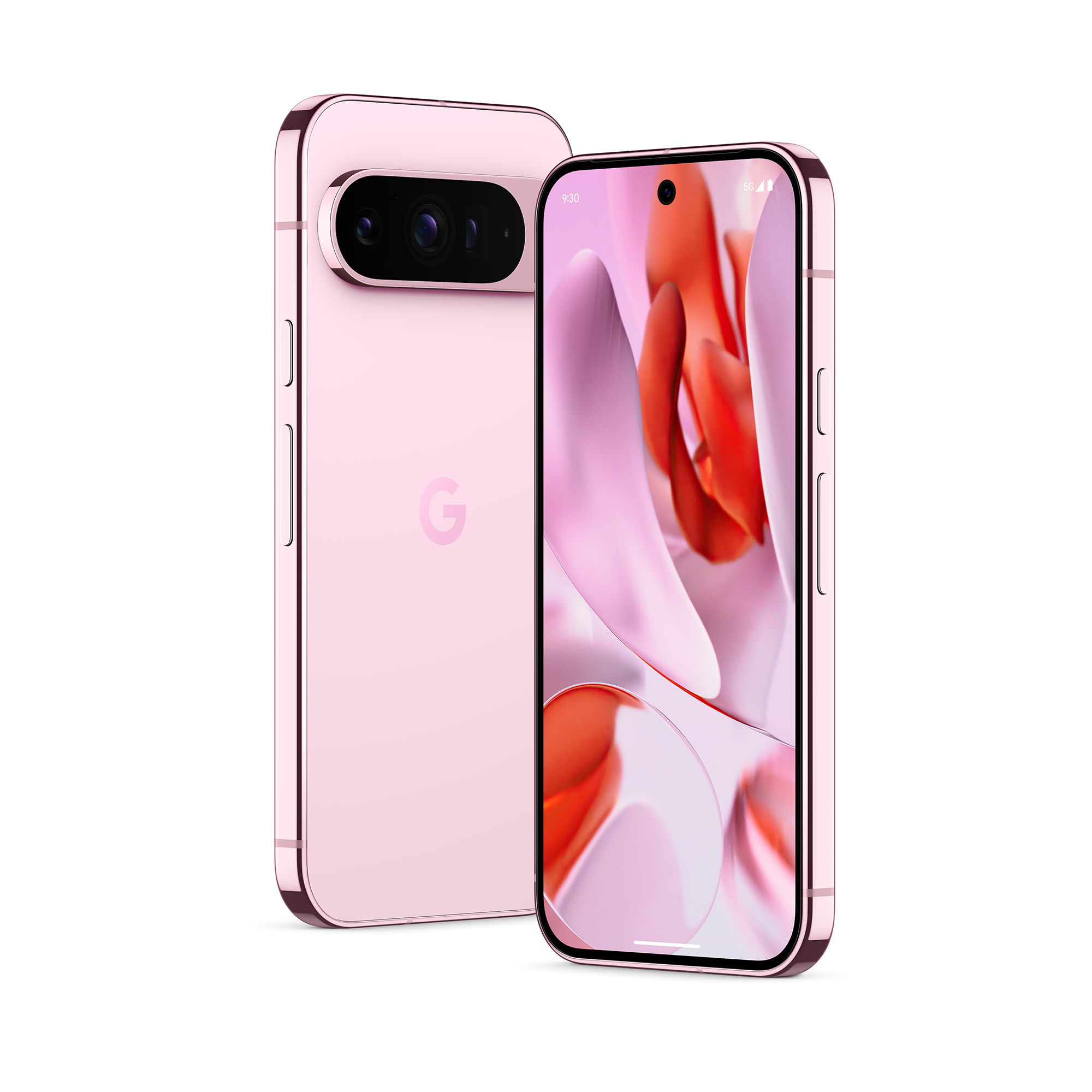
Google Pixel 9 Pro
Redefines what a phone camera can do
The Google Pixel 9 Pro brings the best of Google’s flagship phones to a more manageable size. The camera delivers the fantastic photos Pixel users love, and Google’s AI tricks add even more fun and creativity. With excellent battery life, a fresh design, and a beautiful screen, the Pixel 9 Pro could even be the best Android phone you can buy right now.
- Industry-leading photo-taking and editing
- Seven years of software support
- More compact than other ‘Pro’ flagships
- Tensor G4 isn’t suited for heavy use
- Base model still offers 128GB storage
For those seeking a camera phone that consistently delivers exceptional results without fuss, the Google Pixel 9 Pro stands out as a top contender. While it might seem like an incremental upgrade from its predecessor, sharing two of the same cameras with the Pixel 8 Pro and only slightly upgrading the ultrawide lens, Google’s prowess in computational photography ensures that the Pixel 9 Pro continues to capture stunning images.
Google’s software magic works seamlessly in the background, optimizing every aspect of your photos for impressive results, making it a reliable point-and-shoot option for most users. The addition of a telephoto lens, a first for a smaller Pixel, adds versatility, delivering impressive 5x zoom shots and surprisingly capable 30x Super Res Zoom.
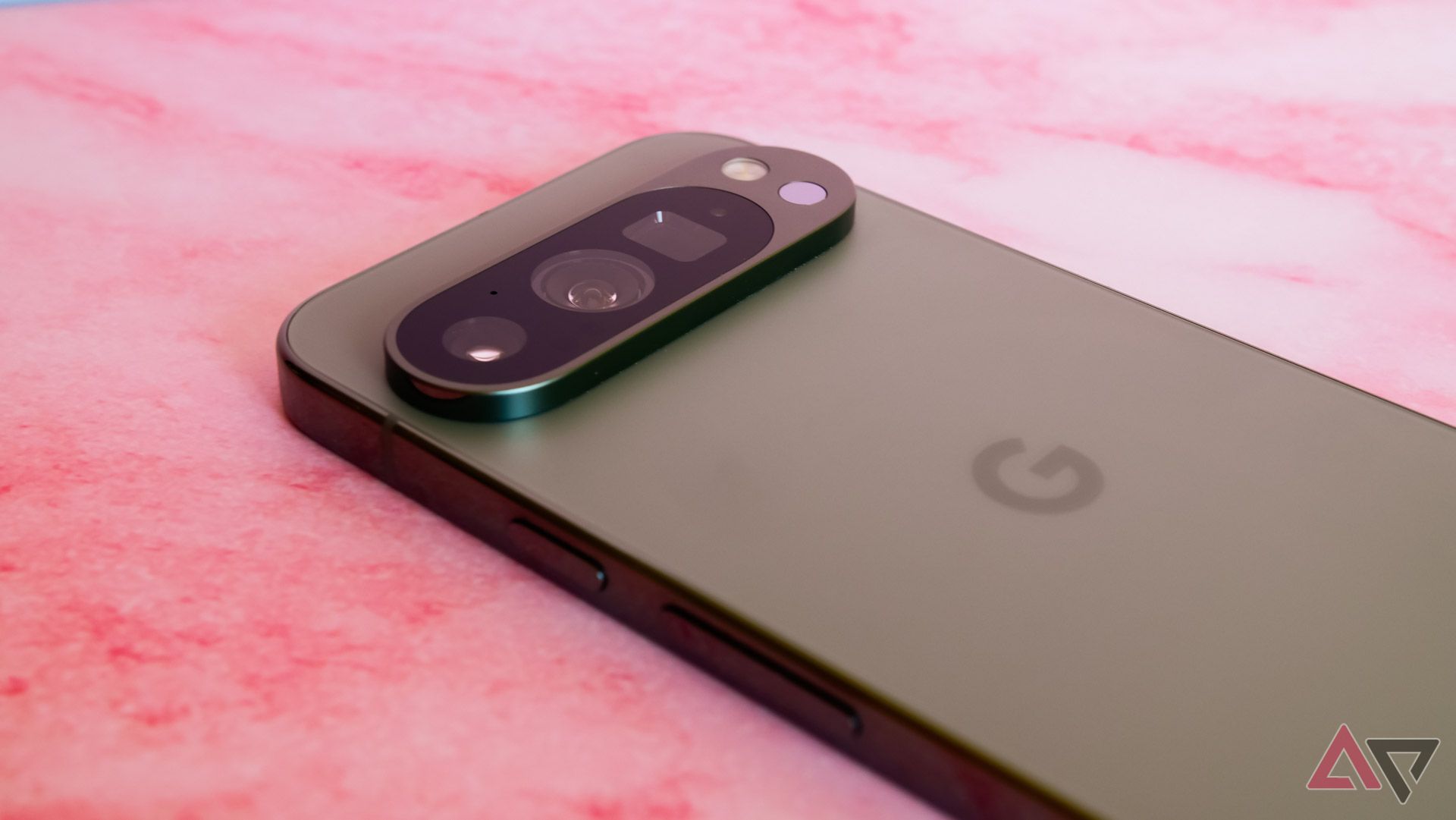
This year, the Pixel’s AI features are the company’s focus. The “Add Me” feature ensures no one is left out of group photos by combining multiple shots, and the Magic Editor and Reimagine features let you edit your photos to such an extent that you’ll start questioning the authenticity of every picture you see online. Even the panorama mode has received an upgrade, now supporting Night Sight for low-light captures, giving users even more creative control over their images.
The only noticeable drawback is in video recording, where it still falls short of the iPhone’s capabilities. However, for photography, the Pixel 9 Pro excels in nearly every aspect, making it one of the best camera phones for capturing not just what you see but the full potential of every scene.
Beyond its camera prowess, the Pixel 9 Pro is a well-rounded flagship phone. Its all-new design is arguably the most premium-feeling Pixel to date. The battery life is surprisingly good, the screen is top-notch, and Google’s commitment to seven years of software support is a significant advantage. The Pixel 9 Pro XL offers the same features in a larger form factor for those who prefer a bigger screen and battery.
The Pixel 9 Pro isn’t perfect. Its Tensor G4 chipset lags behind some competitors in performance, and it can run a bit warm. Additionally, not all the AI features are as groundbreaking as they might seem. However, for users prioritizing a consistently excellent camera experience in a polished package, the Pixel 9 Pro might well remain our top recommendation for the foreseeable future.
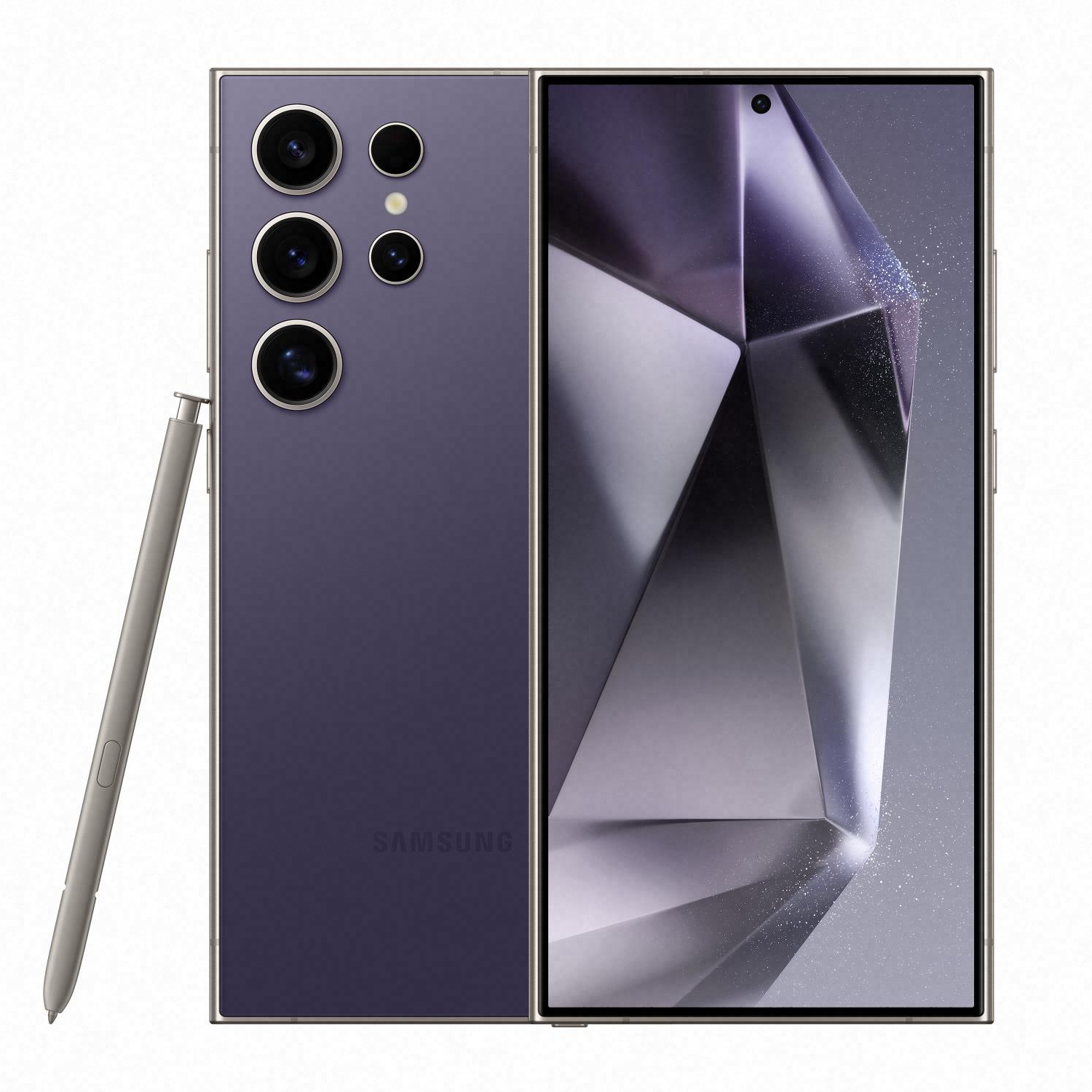
Samsung Galaxy S24 Ultra
Great at pretty much everything
The Samsung Galaxy S24 Ultra is one of the few devices that excels at just about everything you could want from a smartphone. It has insanely good performance, an amazing screen, a great camera system, and good battery life. It’s expensive, but you get a lot for your money.
- Best display currently on a smartphone
- Excellent camera system
- Astounding performance and battery life
- Very expensive
- Cameras can struggle with motion
If you are in the market for a high-end Android device and willing to spend top dollar to get it, look no further than the Samsung Galaxy S24 Ultra. With a massive 200MP f/1.7 main lens, a 50MP f/3.4 periscope telephoto lens with 5x optical zoom, a 10MP f/2.4 telephoto lens with 3x optical zoom, and a 12MP f/2.2 ultrawide lens, the Galaxy S24 Ultra can get an amazing shot in just about any circumstance.
The Galaxy S24 Ultra gives you great flexibility when capturing a great image of your subject. With a 100x zoom, no subject is too far away. You also get a 5x and 3x telephoto lens for even more versatility, depending on how you want to frame your subject. The S24 Ultra is great even when the lights begin to dim, making it a fantastic option for night photography.
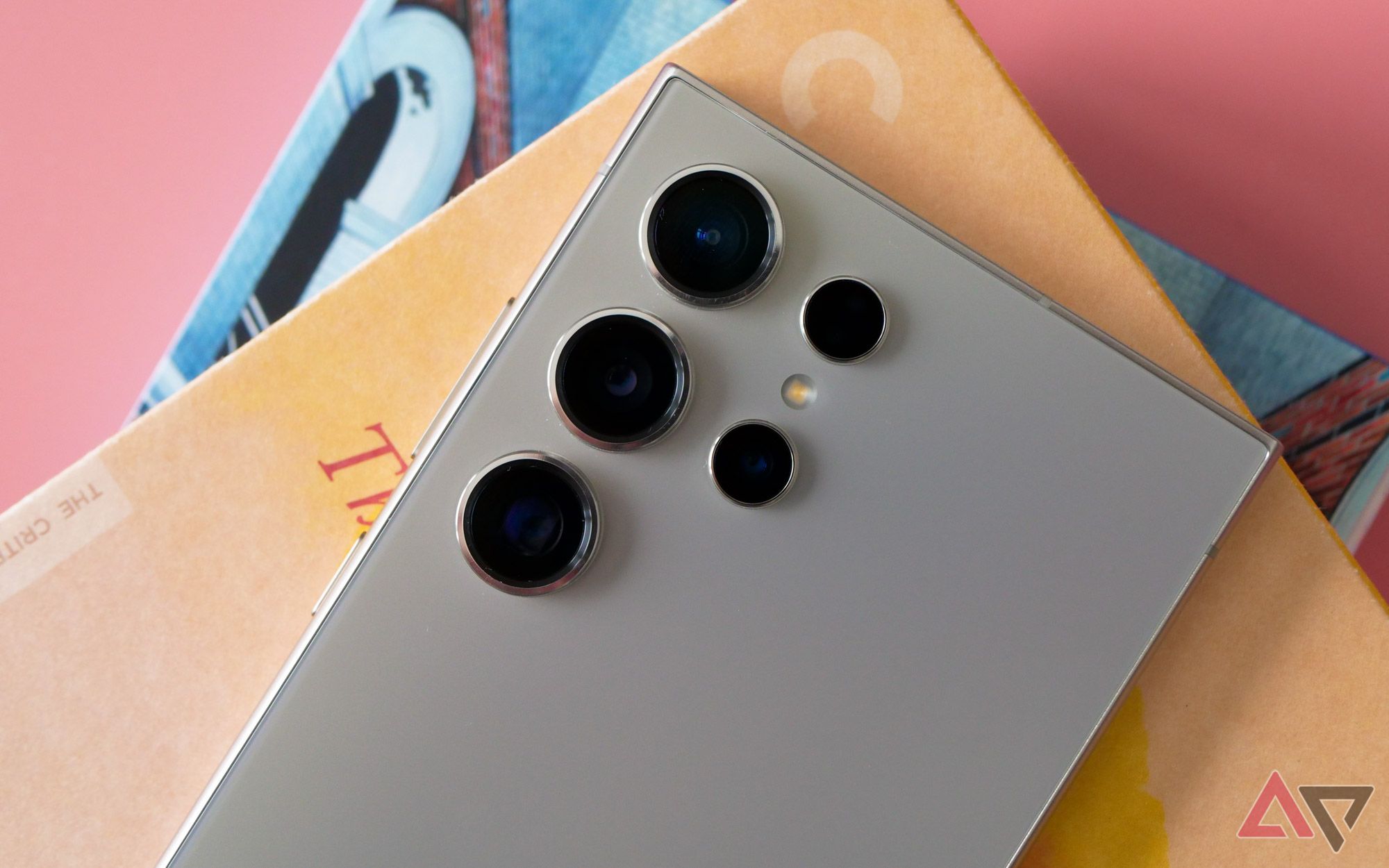
Its only downfall is it can struggle a bit with shutter lag, resulting in difficult-to-get shots of subjects that are in motion. This can make it much more difficult when trying to get images of your kids or pets.
Video recording is also top-notch on this device. It can record 8K at up to 30fps, and 4K or 1080p at up to 120fps. The front-facing camera is a 12MP f/2.2 lens that can record video at 4K or 1080p at 60fps.
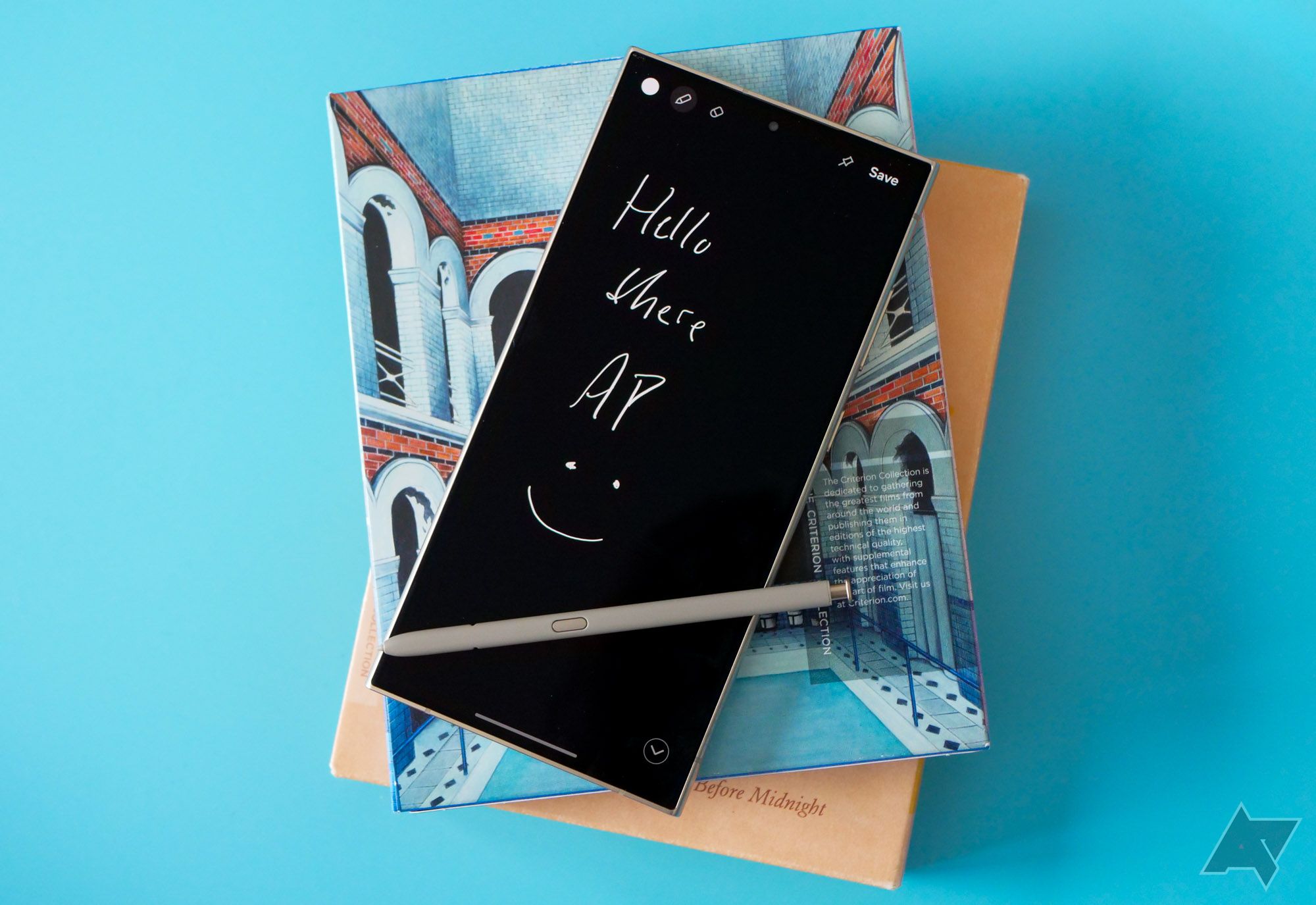
Read our review
The Samsung Galaxy S24 Ultra is still the best, unless you take photos
Samsung’s latest phablet feels like a do-over
In addition to the versatile and generally great camera system, the rest of the Galaxy S24 Ultra is an absolute beast of a device. Performance is excellent thanks to its Snapdragon 8 Gen 3 processor and 12GB of RAM. With a 5000mAh battery, you won’t have to worry about running out of battery in the middle of a crucial shooting session.
If your subjects are generally stationary, and you want the absolute best, the Samsung Galaxy S24 Ultra is tough to beat. While the Galaxy S25 Ultra is only a few months away, the Galaxy S24 Ultra remains the Android top dog.
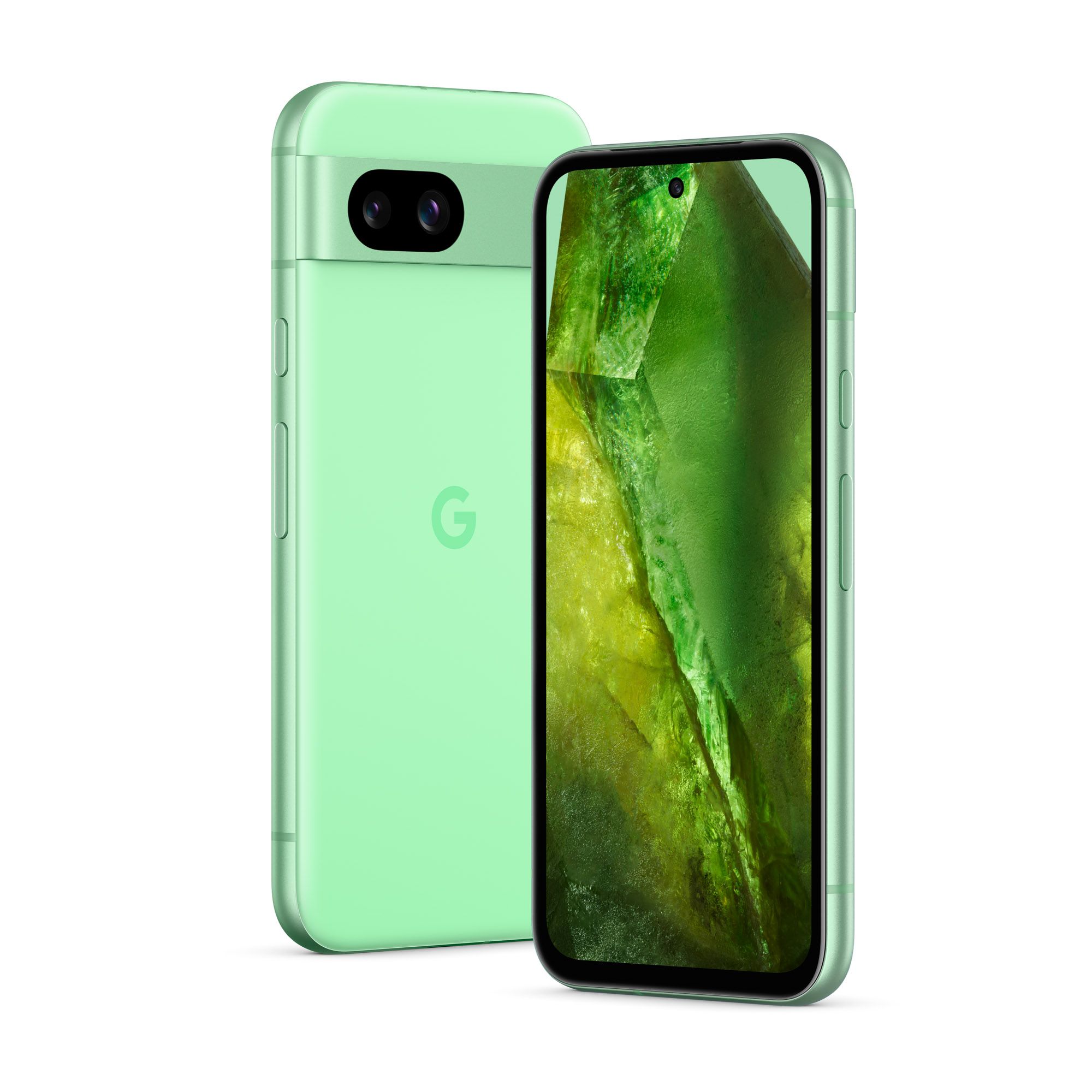
Google Pixel 8a
Pixel goodness on a budget
For those who prioritize functionality and value over the latest aesthetics, the Pixel 8a is a fantastic choice. It delivers an almost flagship-level Pixel camera experience and solid overall performance at a fraction of the cost.
- Best cameras on a $500 phone
- Seven years of software support
- Great overall package
- Slightly larger, uneven bezels
- Tensor G3’s thermal efficiency isn’t the best
In a market where great camera smartphones often command premium prices, the Pixel 8a stands out as the best value option on our list. With the same 64MP primary and 13MP ultra-wide sensors as the Pixel 7a, this phone produces solid, reliable photos that don’t stray too far from the high standards of Google’s flagship models. In fact, as Will noted in our review, it can be hard to tell that these images come from a mid-range device.
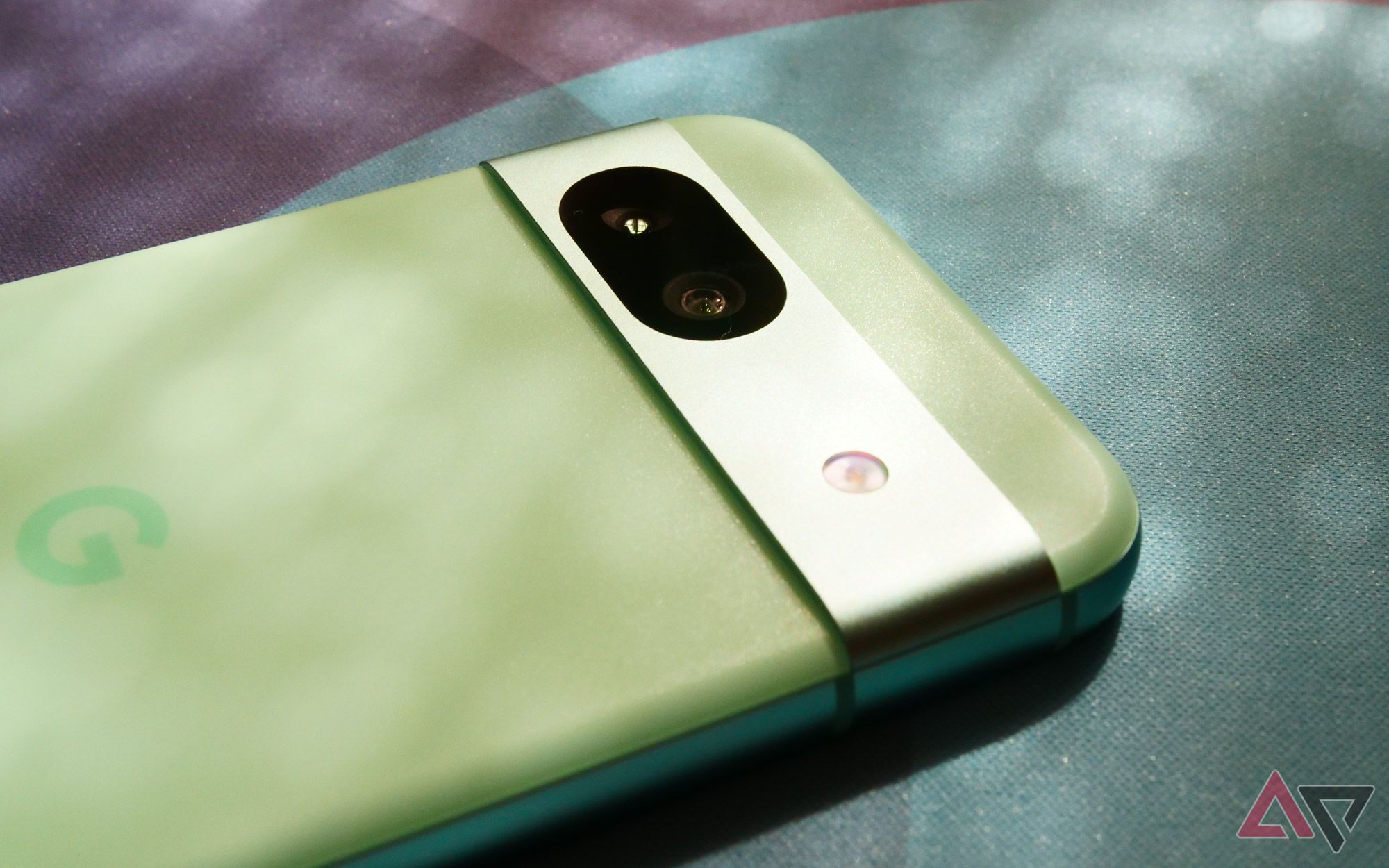
While it lacks a dedicated zoom lens, the Pixel 8a excels at capturing cropped 2x images from its primary sensor, and the ultra-wide lens is more than capable of group shots and landscapes. The addition of Ultra HDR support, previously exclusive to flagship Pixels, is a welcome bonus, making it easier to capture high-dynamic-range images.
Beyond the camera, the Pixel 8a offers a compelling overall package for its $500 price tag. It’s a reliable daily driver with Google’s clean software, a bright 90Hz OLED display, and a compact, lightweight build. The phone even includes features like an IP rating for water resistance and wireless charging, which are often missing in this price range. And Google’s promise of seven years of software support adds further long-term value.
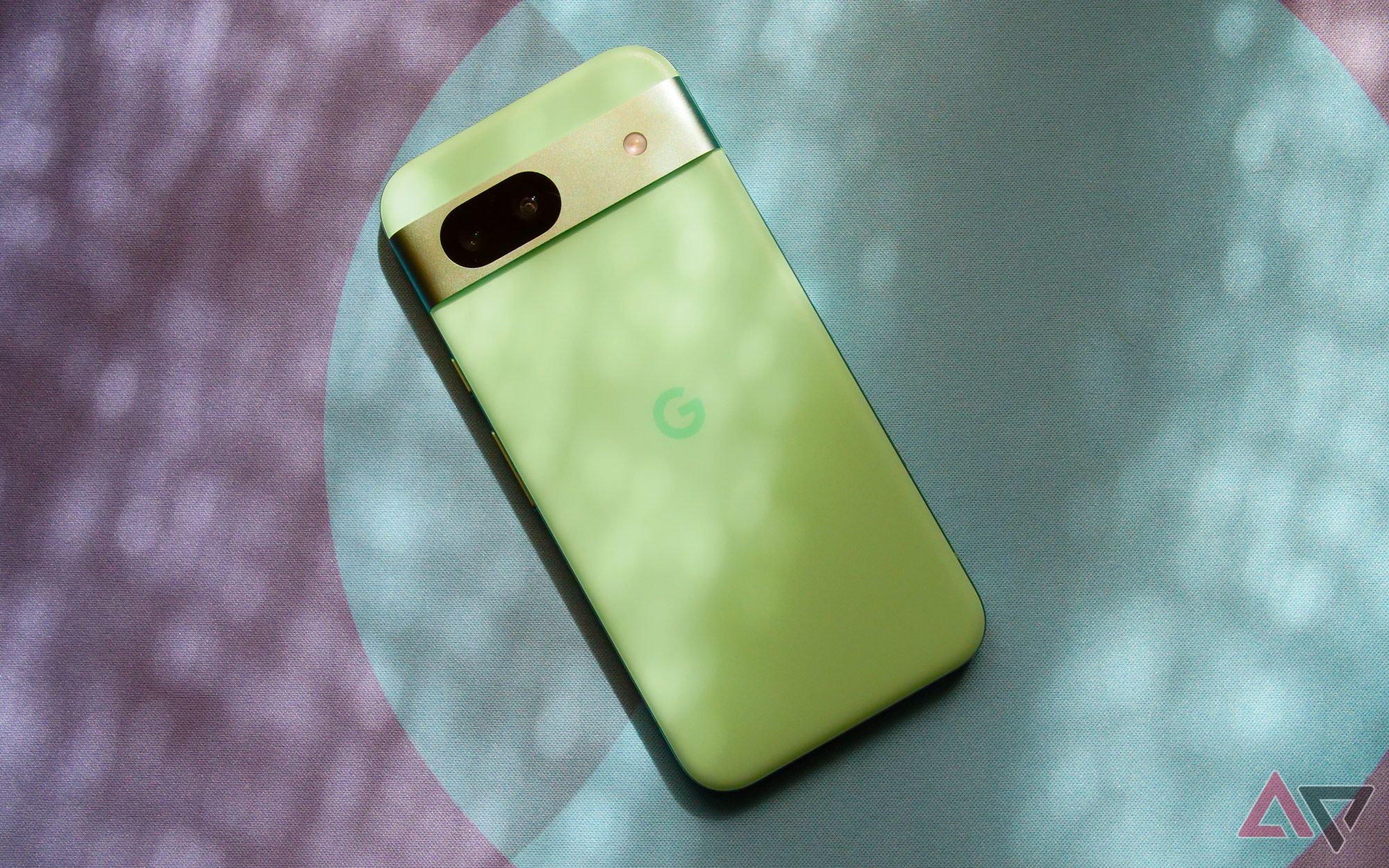
Read our review
Google Pixel 8a review: A great phone that I’m not sure you should buy
Google’s hardware lineup is in a tricky spot, and the Pixel 8a only makes things more confusing
The only real downside is that the Pixel 8a’s design feels a bit dated compared to the newly revamped Pixel 9 series. However, for anyone seeking a high-quality smartphone camera experience on a budget, the Pixel 8a offers fantastic value while retaining much of what makes the Pixel line so appealing.
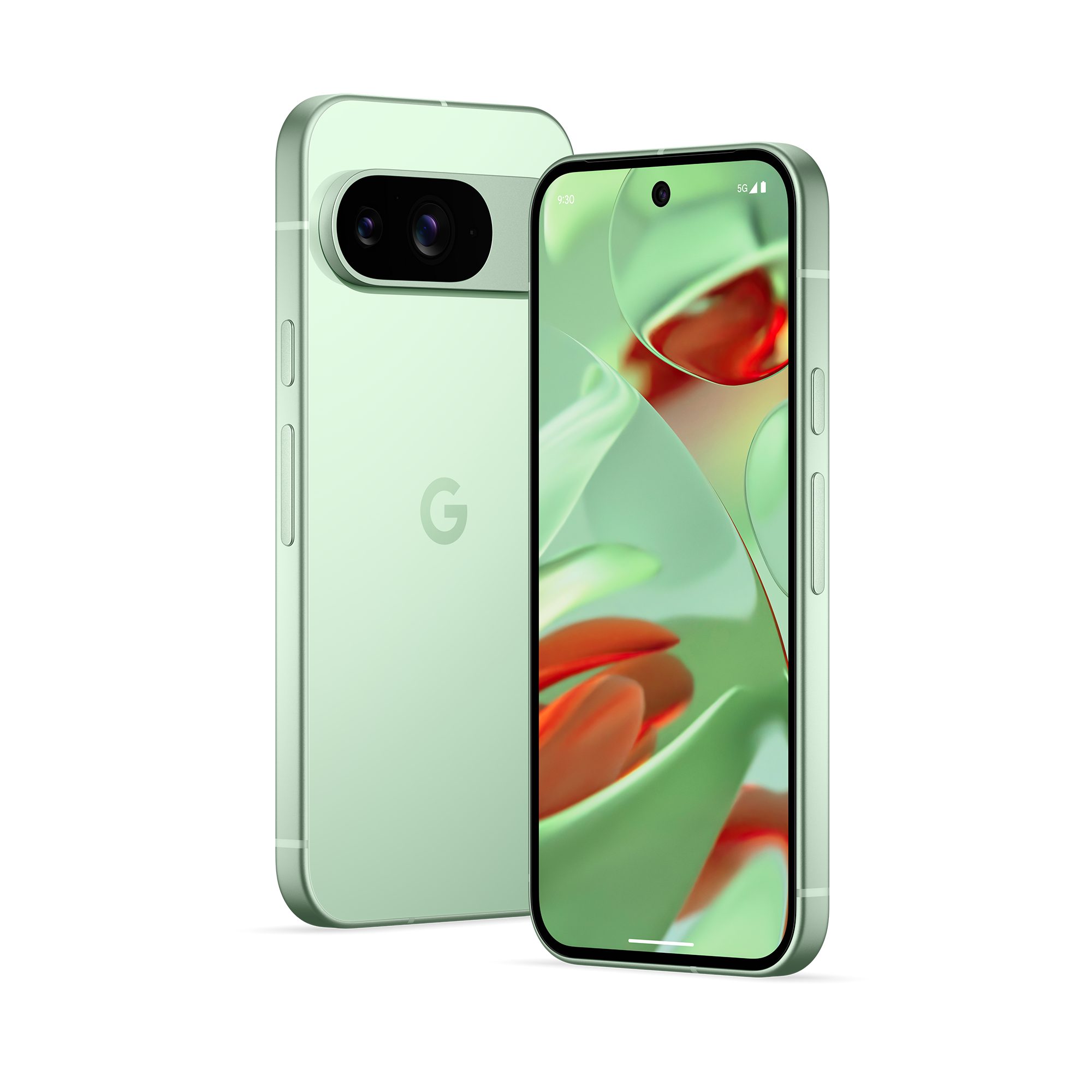
Google Pixel 9
The best cameras on a non-Pro phone
The Pixel 9 is an excellent choice for those seeking a top-tier Android experience without breaking the bank. It delivers a fantastic camera experience, a beautiful design, and reliable performance, making it a worthy contender for anyone who doesn’t need the absolute best of the best.
- Same main and ultrawide cameras as the Pro Pixels
- Great design and display
- Reliable performer
- No telephoto lens
- Charging speeds could have been upgraded
Google’s Pixel 9 proves that you don’t need all the bells and whistles of a Pro model to capture stunning photos. Featuring the same 50MP Octa PD main camera as the Pixel 9 Pro, this phone delivers impressive photos with minimal effort. It also borrows the 48MP ultrawide lens from its Pro siblings, allowing for stunning shots that rival more expensive devices. So, it’s a perfect choice for casual photographers who want quality without complexity.
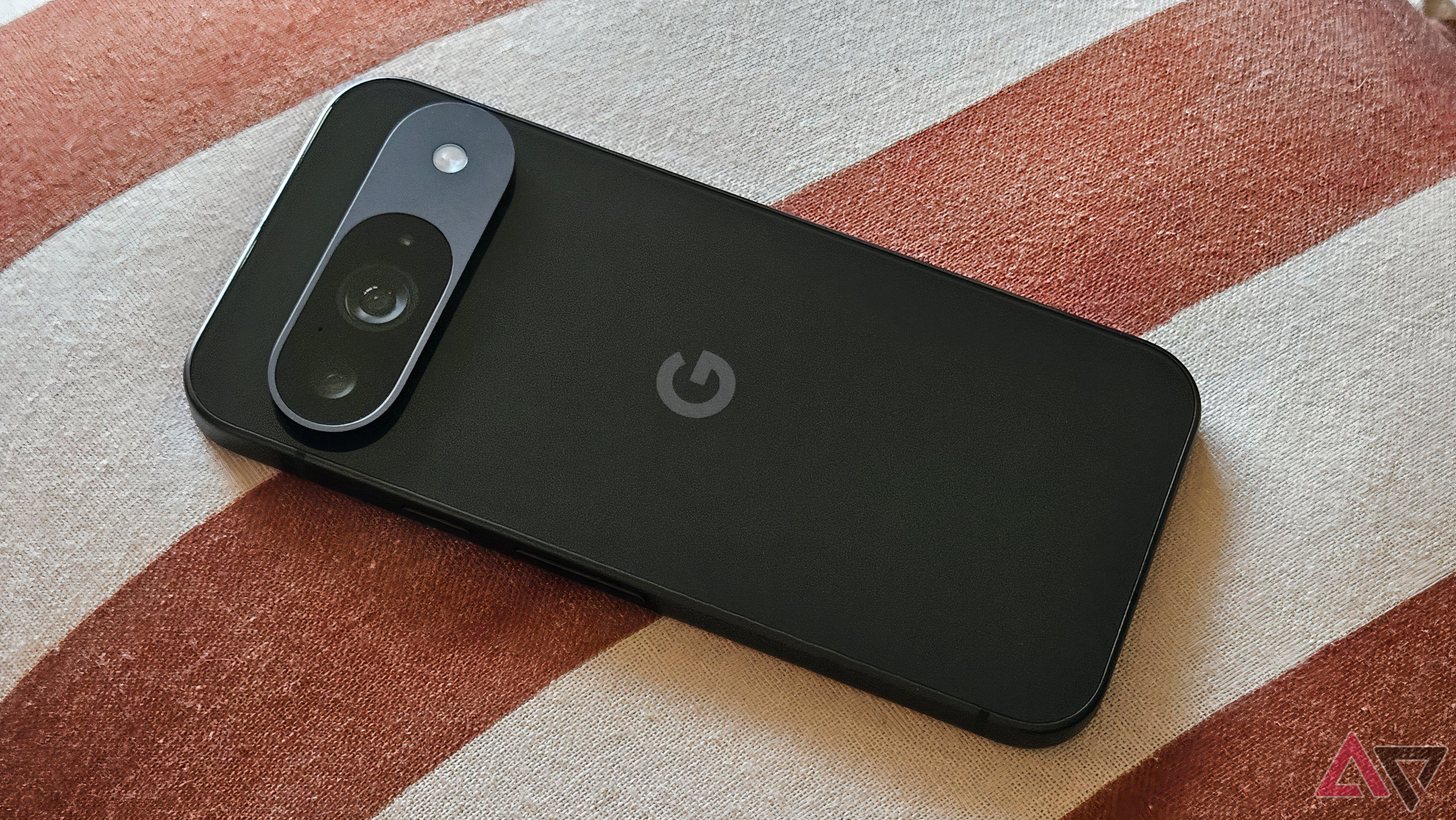
While the lack of a dedicated telephoto lens might disappoint some, Google’s Super Res Zoom technology steps in to offer decent zoomed-in shots, even if it can’t fully replace a true optical zoom. The 10.5MP front-facing camera captures clear and well-lit selfies, perfect for video calls and social media. During our review, we were also pleased with Pixel’s renowned Portrait mode, which continues to be a standout feature for capturing stunning portraits with professional-looking bokeh.
On the software side, the Pixel 9 inherits all the great features from the Pro Pixels. The new Add Me feature adds a fun and creative element to group photos, allowing you to seamlessly include everyone in the shot. The Reimagine feature within Google Photos lets you experiment with AI-powered editing, adding whimsical elements or transforming scenes entirely.
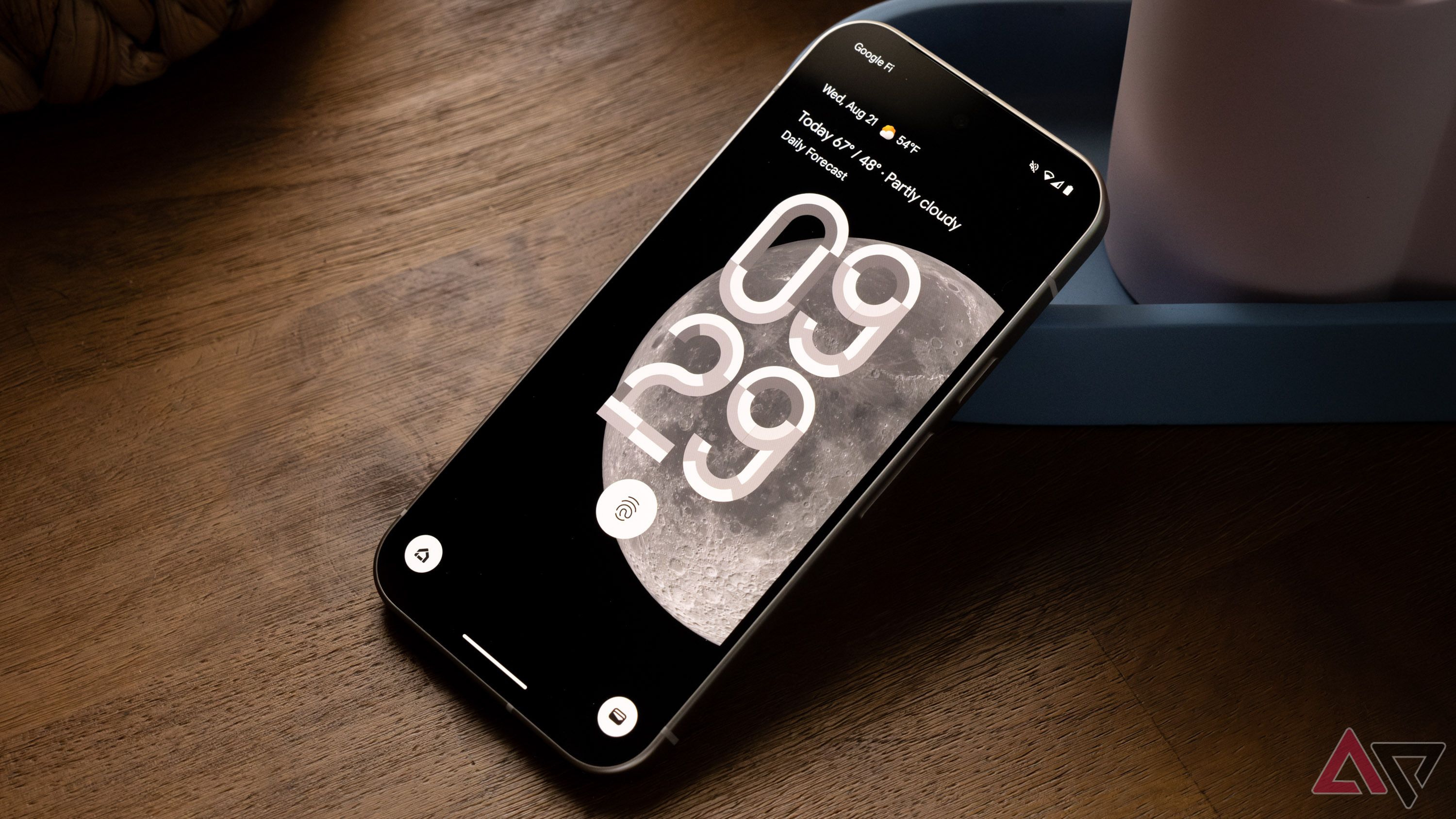
Read our review
Review: The Google Pixel 9 makes me question if I need to go Pro
The Pixel 9 has everything most people want from a phone
Apart from the cameras, this is a great $800 phone. In terms of design, the Pixel 9 feels premium, with a vivid 120Hz display that holds its own against rivals from Apple and Samsung. Powered by Google’s Tensor G4 chipset, the Pixel 9 performs well for everyday tasks, although it’s not quite as good with thermal efficiency as the flagship Snapdragon processors, especially when it comes to sustained performance or usage in direct sunlight. The 4,700mAh battery offers solid all-day battery life, though it’s worth noting that the Pixel 9’s wireless charging speeds have been slightly downgraded compared to the Pixel 8.
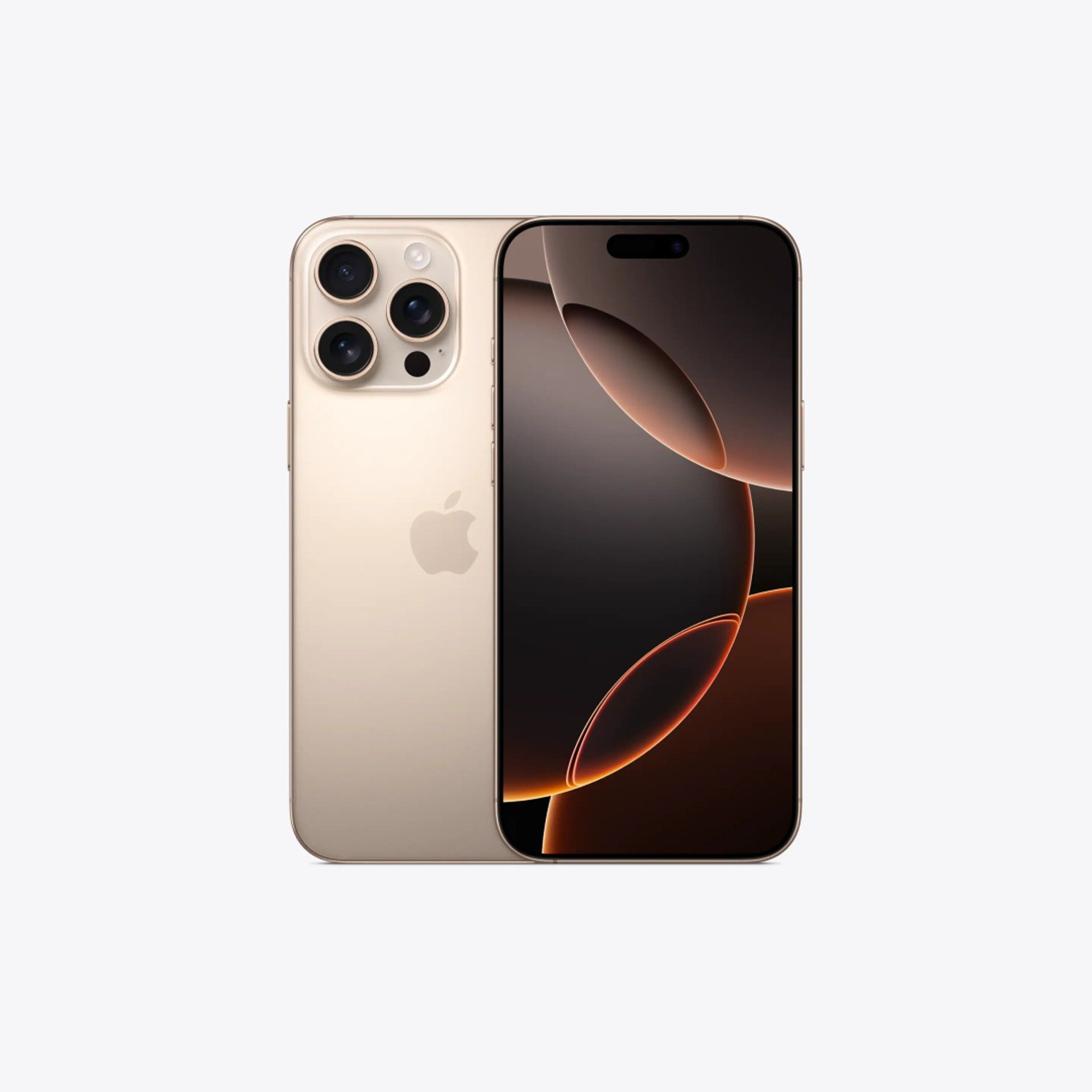
Apple iPhone 16 Pro Max
Powerful enough to shoot a feature film
Apple’s iPhone 16 Pro Max packs Apple’s latest advanced A18 Pro chipset with hardware encoding for high-quality ProRes video that lets you shoot virtually lossless Dolby Vision 4K video with frame rates of up to 120fps. Four studio-quality mics offer unsurpassed audio capture, and Apple Intelligence can scan all your recordings to find your favorite moments.
- Lossless Dolby Vison recording at up to 4K 120fps quality
- Four studio-quality mics for outstanding audio capture
- Excellent display
- Size can be a bit unwieldy
- Expensive
- You’re entering Apple’s walled garden
Apple’s flagship iPhone Pro models hold their own in still photography, but there’s plenty of room for debate about how they compare to their Android rivals, and much of that comes down to personal preference. However, Apple continues to raise the bar for videography, and that’s one area where it’s leaving everyone else in the dust. That’s thanks to its decision to use the power of its A-series silicon to deliver features like Dolby Vision and ProRes video recording.
Apple got ahead of the curve when those features came to the iPhone 12 Pro lineup four years ago, and has pushed each successor to new heights, offering cinematic video recording features, higher frame rates, and support for video formats like Log and the Academy Color Encoding System (ACES). Those are beyond what most people will ever need to use, but they show how seriously Apple takes videography on the iPhone Pro — and filmmakers clearly agree.
The iPhone 16 Pro Max is capable of Dolby Vision 4K ProRes recording at frame rates of up to 120fps, which powers its new Cinematic Slow Motion feature, playing back at 1/5th speed when pulled down to a standard 24fps playback rate. Perhaps an even more significant enhancement this year is a new array of four studio-quality microphones that not only deliver better recording quality, but also reduce the noise floor and cut out wind noise.
These, combined with the AI capabilities of the new A18 Pro chip, power a new Audio Mix feature that can identify and separate background sound from foreground audio, allowing you to choose a studio-style mix where the background noises disappear, or a more cinematic mix that balances the sounds out properly; think of it as portrait mode for sound.
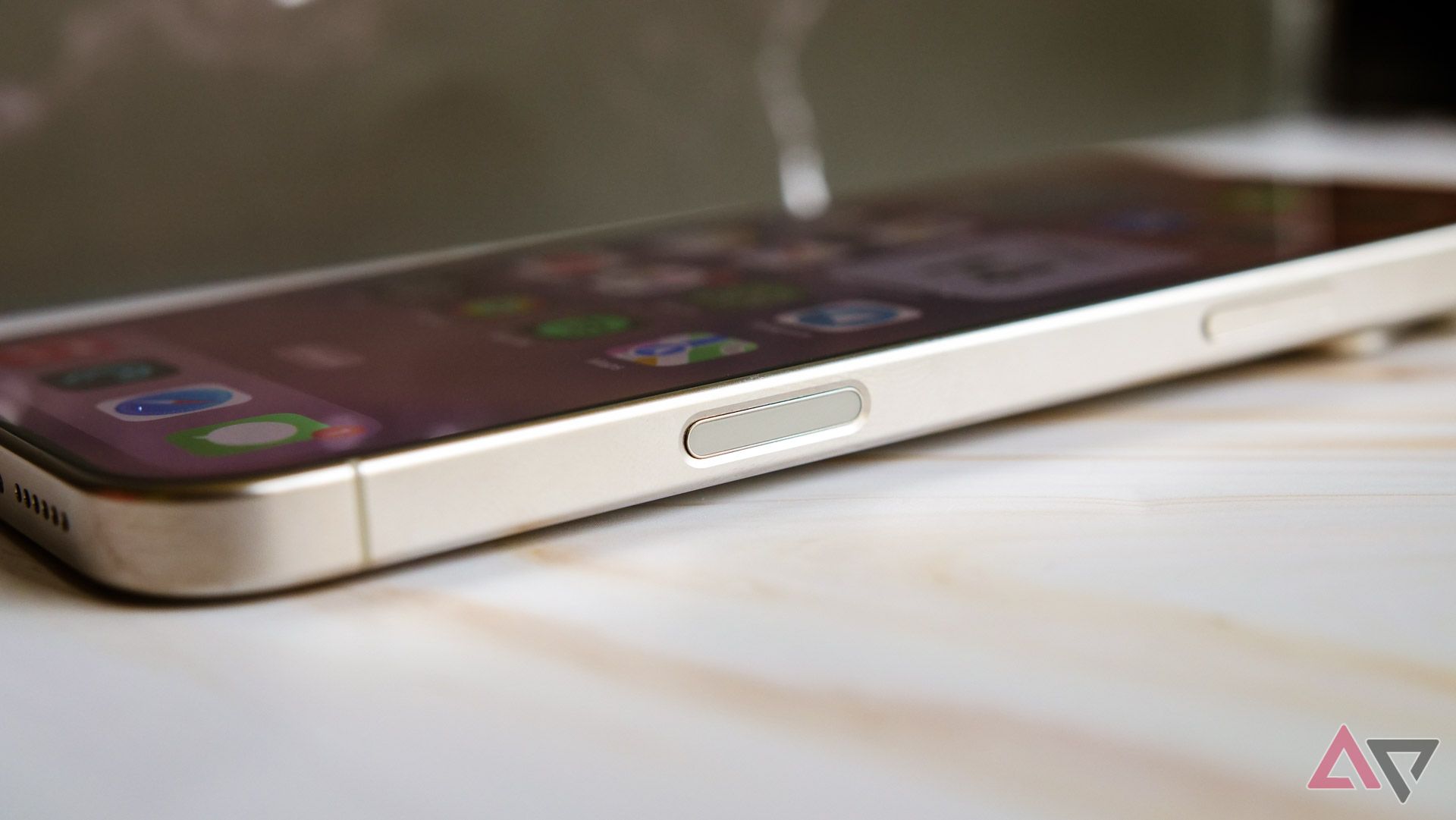
However, the most visible change on this year’s iPhone 16 Pro Max is a new Camera Control button that provides quick and easy access to both open the camera app and capturing photos and video. The button works much like a DSLR or point-and-shoot camera, using a capacitive sensor to detect a light press to lock in autofocus and auto-exposure and let you adjust settings by swiping along the button, followed by a full press to take a shot.
Pressing and holding will let you quickly record a short video clip, but if you switch to video mode, you can use the button to start and stop recording and even control zoom and other features while recording. It’s not for everyone, and you can still use the on-screen controls if you prefer, but it’s nice to have the extra option, and it’s particularly useful for capturing moments you might otherwise miss.
While it’s far from the first to enter the AI game, Apple dove in this year with Apple Intelligence. These features are still rolling out gradually, and there’s little here to match the clever photo and video editing tools that Google has baked into its Pixel phones. Apple’s one user-facing addition for photos, Clean Up, is a very late-blooming version of Google’s Magic Eraser.
Other AI features include writing tools and summaries of text and notifications, plus upcoming AI image generation tools that are expected to arrive by the end of the year, along with ChatGPT integration. However, one helpful feature for those who shoot a lot of videos is Apple’s new AI-based search that lets you use natural language to find video clips based on content and even takes you right to the frame where that scene begins.
The iPhone 16 Pro Max goes beyond photography and videography, of course. The A18 Pro is powerful enough to handle AAA console games, enhanced by the gorgeous 6.9-inch screen with its 120Hz refresh rate. The USB-C port also features 10Gbps transfer speeds and allows video to be recorded directly to an external storage device. That’s an important feature, considering a minute of 4K ProRes video at 120fps needs around 26GB of storage.
Apple has also bolstered wireless charging speeds this year to 25W, provided you’re using one of Apple’s own MagSafe adapters; Qi2 speeds are still capped at 15W, and wired speeds haven’t significantly improved over the prior models or what many Android phones can deliver.
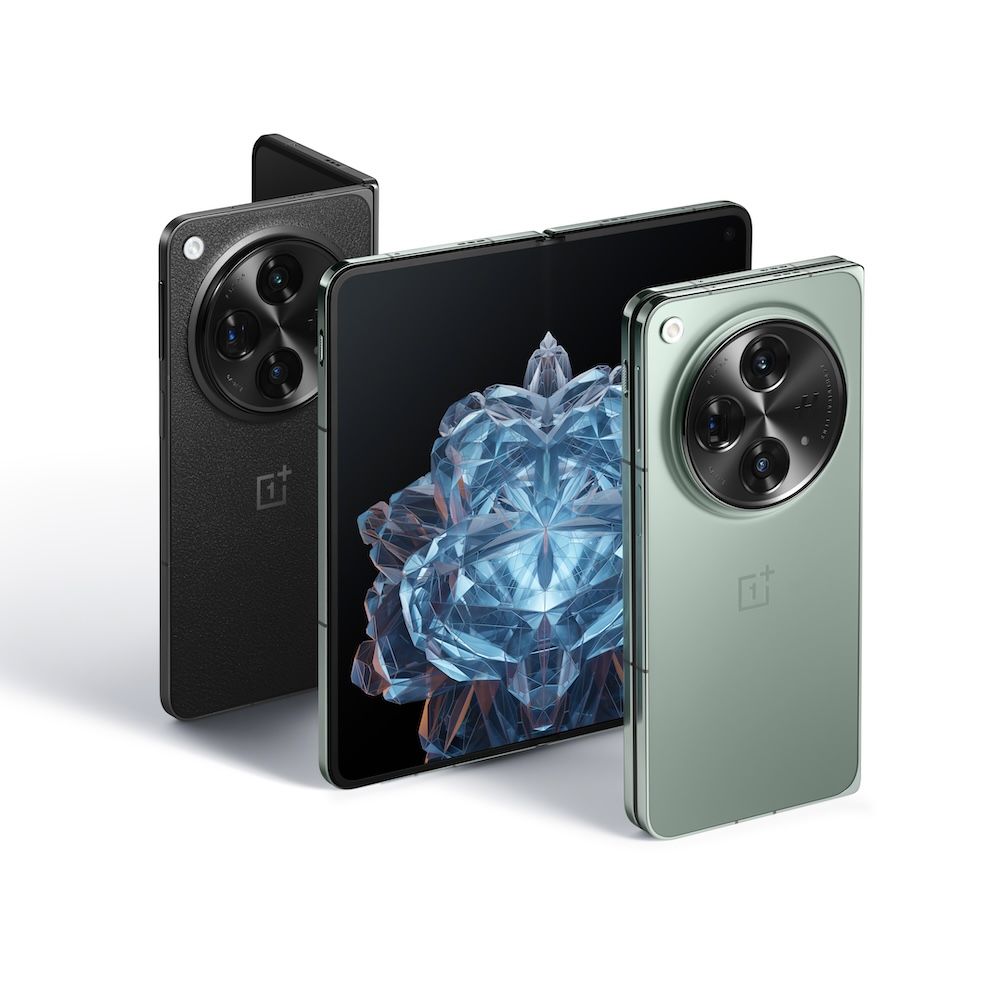
OnePlus Open
A step above the foldable competition
The OnePlus Open packs the best camera in any foldable right now, making it a better choice than the Z Fold series and even the Pixel foldables for photo aficionados.
- Makes no sacrifices, despite the form factor
- Great performance and battery life
- Best cameras of any foldable
- Lacks wireless charging
- OnePlus’ OxygenOS isn’t quite there yet
- Really expensive
Android Police expert Will Sattelberg had a fantastic time getting to know the OnePlus Open, going so far as to call it “the best folding hardware money can buy.” Granted, it costs quite a bit of said money, but that’s high praise in a field dominated by companies with much more popularity and experience with foldables. Even with the newly launched Pixel 9 Pro Fold, we found that the OnePlus Open delivered a more enjoyable and rather consistent camera experience.
The cameras on folding smartphones don’t typically inspire much awe, to say the least, but shoehorning top-quality lenses into such a novel form factor does pose engineering difficulties. To solidly buck that trend, OnePlus paired with Sony to develop the LYTIA sensor, which uses a novel approach called pixel stacking to effectively double the sensor’s size and let in considerably more light. It also employs a similarly interesting 3× telephoto lens that actually uses hardware wizardry to simulate 6× optical zoom without the grainy, fuzzy results common to digital zoom.
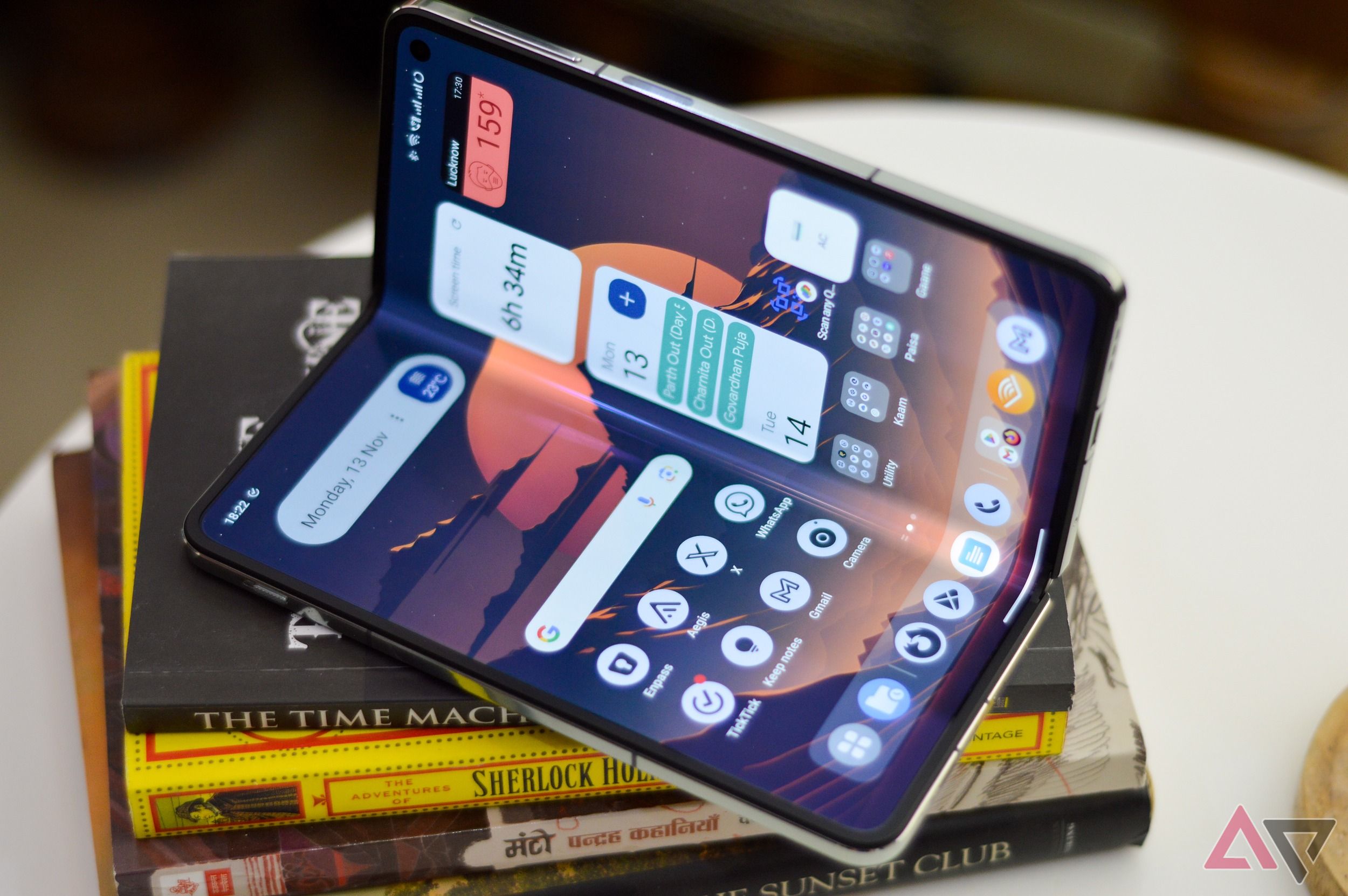
Its duo of selfie cameras do a good job of taking pictures of your own beautiful face, although don’t deliver the richest colors, and have a consistently off viewing angle that didn’t quite look right. But they also aren’t of much consequence, because you can always use the almost peerless main lens with the phone closed and the camera app open on the outer display.
Our extensive hands-on testing left us with zero major complaints about pictures or video, and nothing but praise compared to other foldables. In that same vein, the OnePlus Open excels over competitors in most other ways, too. Its slightly wider aspect ratio and shorter height make it more usable overall, especially when it comes to the outer display. Both screens’ pixel density, brightness, and HDR support roundly defeat other foldables’ of both orientations. The Snapdragon 8 Gen 2’s performance never disappoints, and 16GB of RAM gives you the freedom to use the Open like a real tablet, with plenty of operations running at once. Battery life also exceeds the competition, and by a significant amount.
So the OnePlus Open must be the perfect folding smartphone, right? Well, not quite, as OnePlus isn’t exactly famous for its Android engineering, and its somewhat obfuscated Android 14 development isn’t exactly inspiring. Its OxygenOS skin isn’t terrible — indeed, it offers some novel controls that enhance productivity and usability, especially in terms of the aforementioned multitasking. But it doesn’t deliver the same kind of reliable, easily customizable, intuitive experience companies like Samsung ride on. Also, to much annoyance, the Open doesn’t support wireless charging.
Despite its (admittedly minor) faults, the OnePlus Open absolutely leads the foldable pack. If you want great pictures from a folding phone, it’s the one for you. And that’s saying something for a phone that has been out for over a year now.
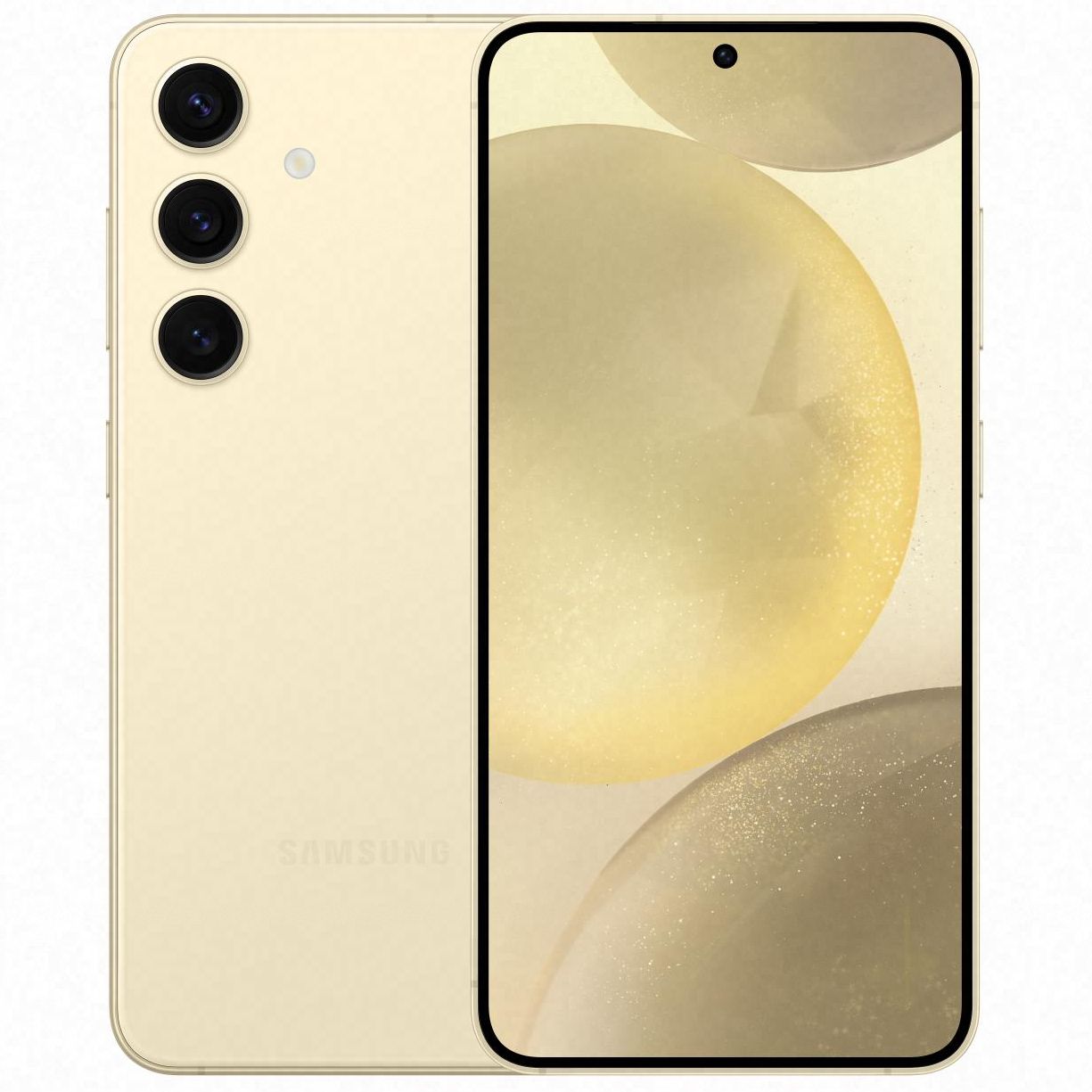
Samsung Galaxy S24
Does everything well, including imaging
The Samsung Galaxy S24 is a compact powerhouse that offers good battery life, amazing performance, and a solid camera system. If you love smaller devices, then the Galaxy S24 offers a complete package in a small form factor.
- Easy to use one-handed
- Nearly perfect display
- Good camera system
- Disappointing charging speeds
- Less-than-perfect motion handling
If you can’t stand the idea of a large device, or struggle to wield one, then the size alone makes the Samsung Galaxy S24 a great choice. Add in its fantastic performance and good camera system, and you have a solid, well-rounded device. The Galaxy S24 has a 50MP f/1.8 main lens, a 10MP f/2.4 telephoto lens with 3x optical zoom, and a 12MP f/2.2 ultrawide lens.
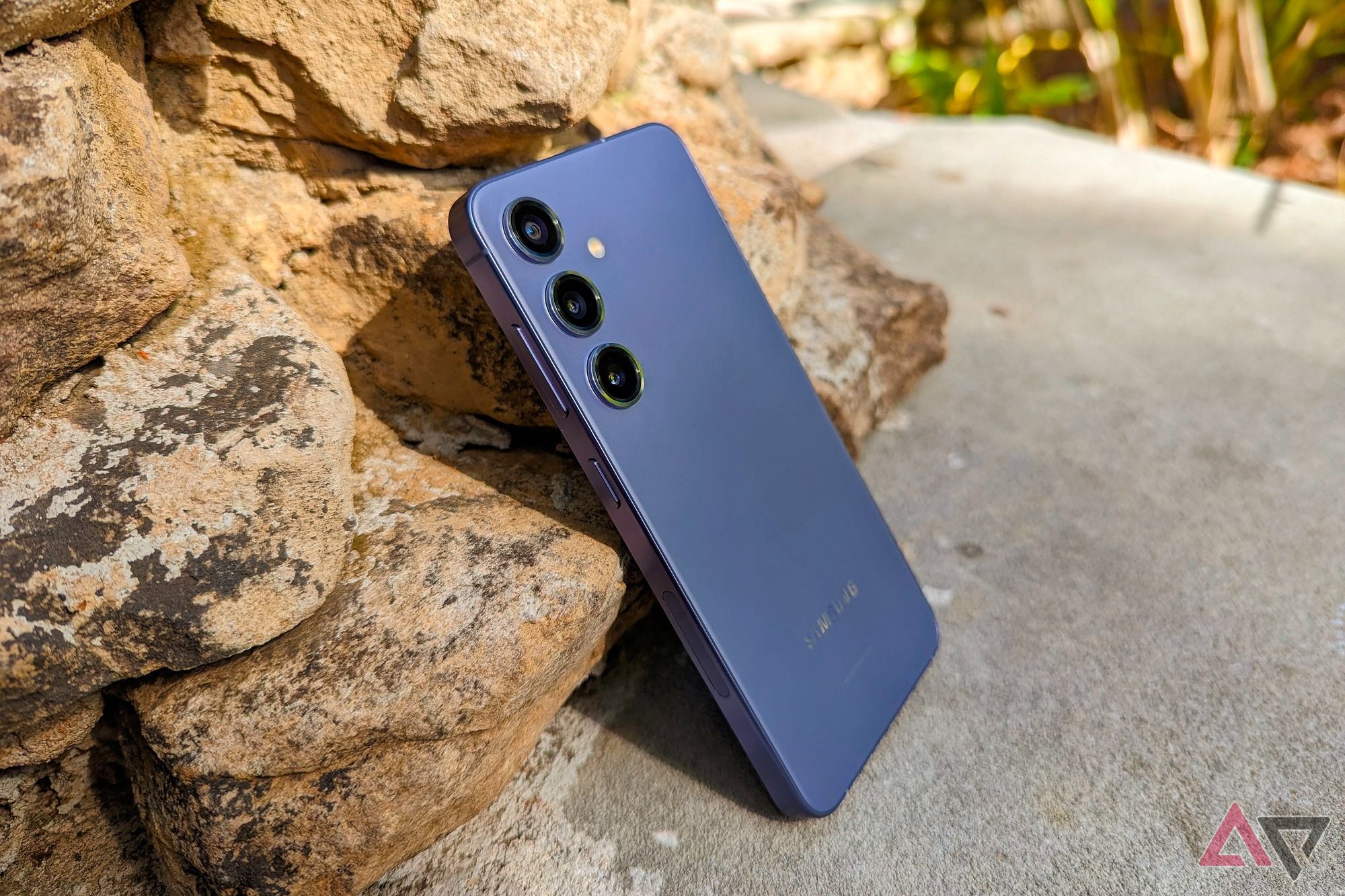
Samsung has used this triple-camera setup for a while now, but it’s still capable of getting fantastic photos and the inclusion of a telephoto lens gives it decent versatility. The Galaxy S24 excels at taking images of stationary subjects in all sorts of lighting conditions. Like all Samsung devices, it suffers from shutter lag, making it difficult to get a good shot of subjects in motion.
Outside the solid camera system, this device is quite capable. Its 6.2-inch dynamic LTPO display can hit a peak brightness of 2600 nits, and its 4000mAh battery will net you a solid day of usage. The Galaxy S24 is a powerhouse thanks to its Snapdragon 8 Gen 3 processor and 8GB of RAM.
This device would be practically perfect for small phone enthusiasts if it didn’t struggle with subjects in motion. If that doesn’t bother you, or you don’t take too many pictures of things moving, then the Galaxy S24 is a great option for those who want a more pocket-friendly device.
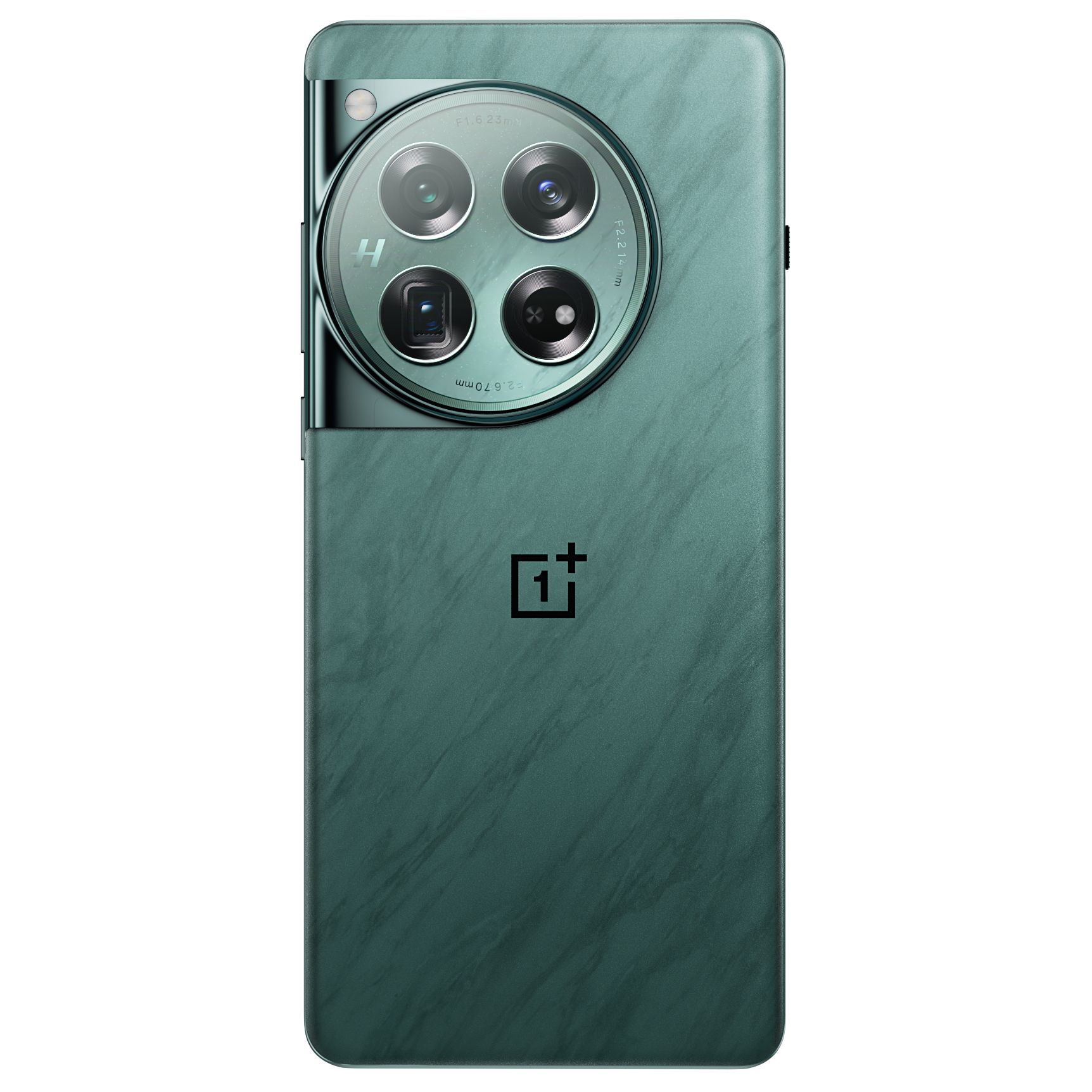
OnePlus 12
A flagship for less
As flagship devices inch further north of a thousand dollars, OnePlus continues to stick to its philosophy of bringing fantastic specs at a reasonable price. The OnePlus 12 is the latest device from OnePlus to offer powerful performance, a great camera system, and amazing battery life while keeping the price to a minimum.
- Great camera system
- Fantastic display
- Battery life is second to none
- Not available at carriers
- OxygenOS inconsistencies
OnePlus has once again brought a device capable of taking on the likes of the Samsung Galaxy S24 Ultra while keeping the price at a reasonable cost of $800. The OnePlus 12 offers amazing all-around performance, making it tough to overlook.

With a 50MP f/1.6 primary lens, a 64MP f/2.6 periscope lens with 3x optical zoom, and a 48MP f/2.2 ultrawide lens, you are just about guaranteed a great shot from any of its lenses. Most devices see image quality drop when taking photos from a lens other than the primary lens, but that’s not the case here. OnePlus has rightfully touted that all three of its lenses can take equally great photos.
The OnePlus 12 is equipped with a Snapdragon 8 Gen 3 processor and up to 16GB of RAM, making it a performance powerhouse. You can also expect it to last days with its included 5400mAh battery. The OnePlus 12 even sees the return of wireless charging, although you may not need it thanks to its 80W wired charging that can fully charge it in as little as 30 minutes.
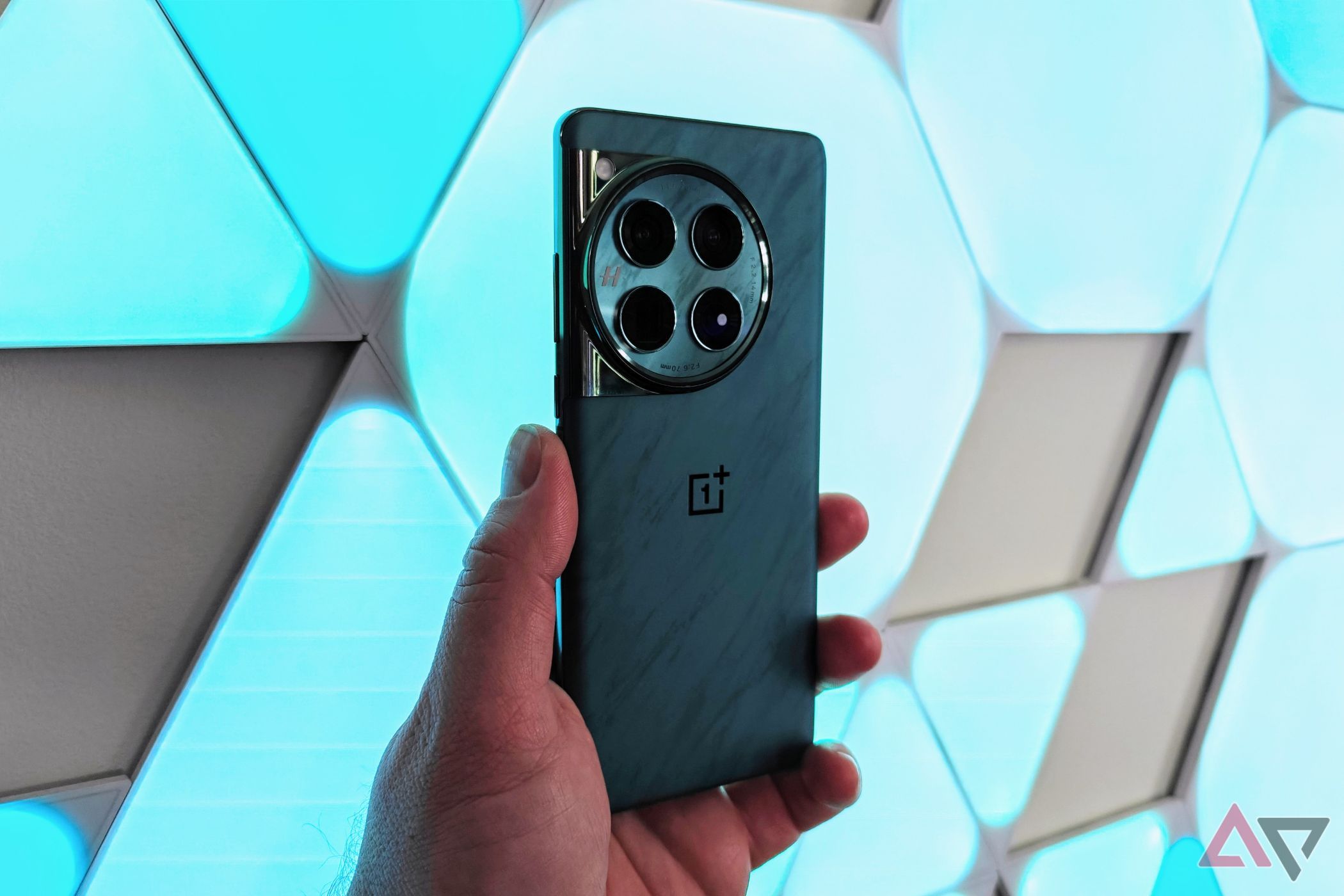
Read our review
OnePlus 12 review: All flagship, no AI
This phone leaves nothing on the table, making for a truly complete package
No device is perfect and that’s true here as well. OxygenOS isn’t the most sophisticated take on Android and is a bit lackluster. OnePlus has also not equipped the OnePlus 12 with any AI features. From a camera and performance perspective, the OnePlus 12 is a fantastic device. It’s just missing some of the features that other top-tier flagships possess in 2024.
What should I look for in a camera phone?
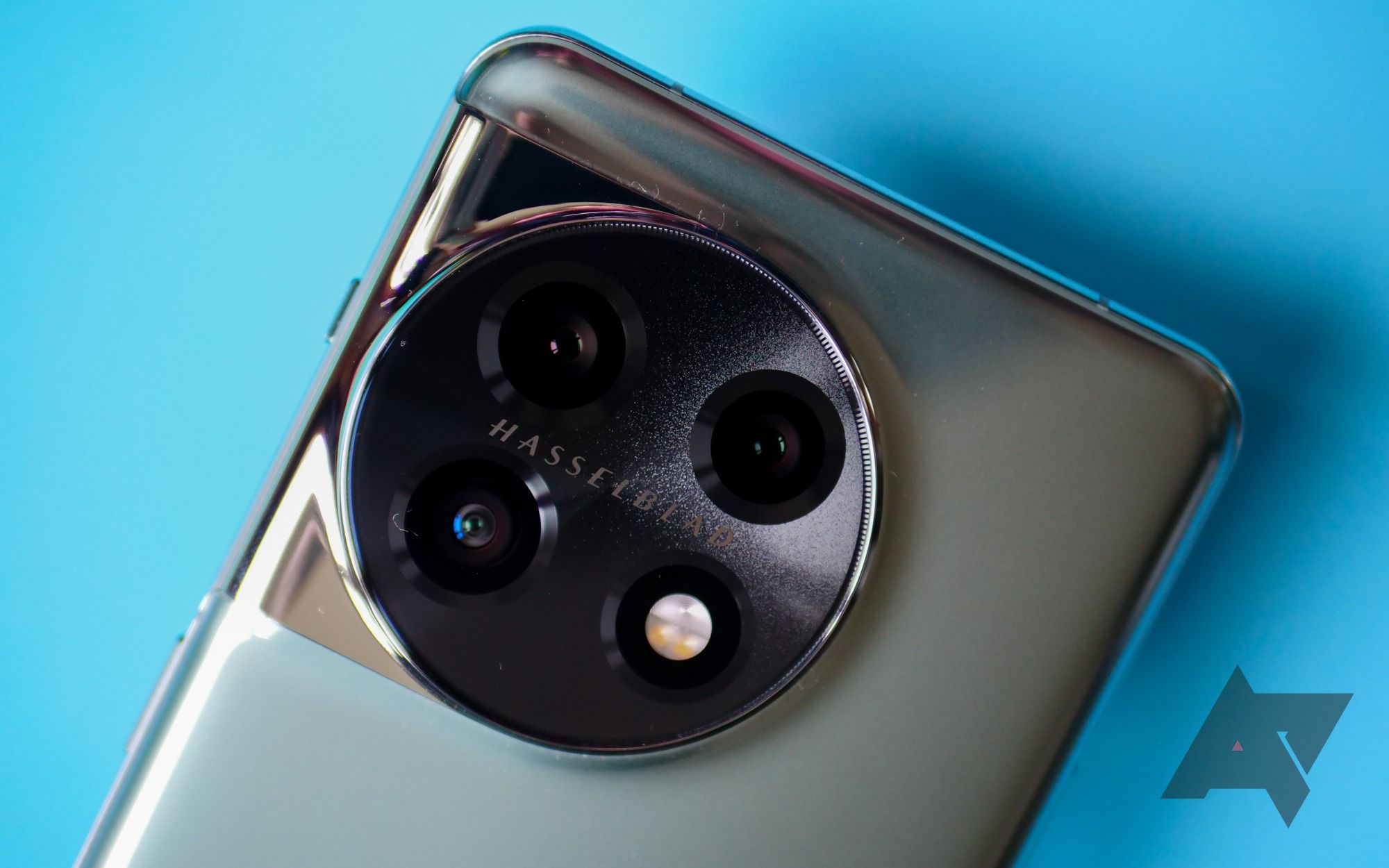
All of our favorite camera phones are excellent, easily recommended phones, even if the camera isn’t your number one concern. When it comes to taking pictures and videos, each one offers its own advantages.
Some, like Google’s Pixel lineup, specialize in nearly magical processing that seems to know better than you how to take the best picture. Others deliver straightforward but consistently bold and bright images, with user-friendly interfaces like Samsung’s to match. Still, other phones have set out to bring the smartphone picture-taking process into line with how an actual camera works. And some, like the iPhone in all its versions, make short work of smooth, top-quality video.
What do the different types of smartphone cameras do?
When comparing smartphone camera systems, there are several different types of lenses. They all have different focal lengths, so the resulting images look very different.
- Primary sensors, typically with wide-angle lenses these days, sport the highest resolution, the best stabilization, and the most advanced color capture features. They see the bulk of the use for nearly all users.
- Telephoto lenses, with longer focal lengths and optical zoom capabilities, make it easy to capture subjects from far away without sacrificing detail as digital zoom does.
- Ultra wide-angle lenses take wider pictures still than a wide-angle lens, which means that you can capture more in a single frame (think group photos); however, the fisheye effect may also visibly distort the resulting images.
- Macro lenses allow you to focus on a subject that is very close to the lens, capturing the finest details at larger-than-life image sizes.
How much do high megapixel counts matter?
While the megapixel count is often cited as the first indicator of a camera’s quality, it doesn’t tell the whole story and, in some cases, may not matter that much at all. Sure, a picture’s resolution is important, but cramming more pixels into a lens makes each one smaller and able to take in less light.
Combined with the varying technologies used by each sensor manufacturer, the megapixel count is less and less critical. That rings especially true with the high-end phone cameras we’ve highlighted, as most primary lenses are in the neighborhood of 50 megapixels, with little variation.
What is pixel binning?
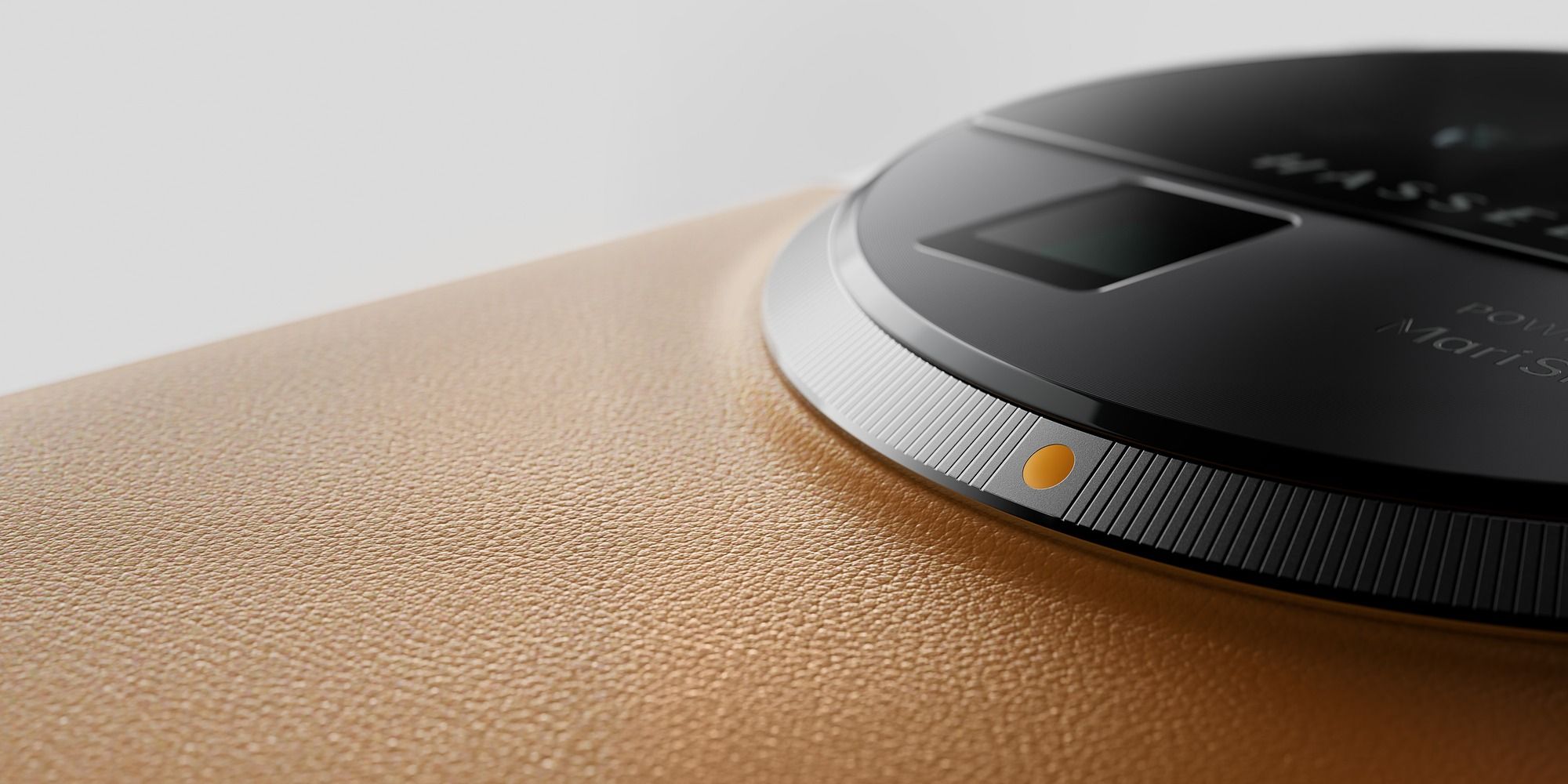
Speaking of high resolutions, most smartphones don’t even take pictures at their primary sensors’ full resolution by default. Pixel binning has become ubiquitous among high-resolution cameras and is key to understanding the reality of smartphone photography. This process combines the light intake from multiple adjacent pixels, improving brightness performance, contrast, and file size.
You can always turn it off, but it might affect low-light performance and will definitely produce huge image files. If you plan to make posters out of your smartphone photos, a native-resolution image works best. But if you’re taking snaps for friends, family, social media, or device wallpapers, pixel binning isn’t just more efficient; it’s often superior.
Which camera phone should I buy?
The best camera phones offer something for everyone, no matter what your budget or photography needs might be. The Google Pixel 9 Pro stands out as the best overall camera phone thanks to its excellent balance of hardware and Google’s AI-driven software. Whether you’re a casual user or someone who loves to tweak every detail, the Pixel 9 Pro provides an effortless yet powerful photography experience.
For those seeking the ultimate premium experience, the Samsung Galaxy S24 Ultra is our top choice. With its 200MP primary camera and advanced zoom capabilities, this phone is perfect for users who want professional-level quality and more control over their shots. It’s especially well-suited for photographers who wish to capture high-resolution images and advanced video capabilities, and its general performance and battery endurance are still better than the Pixels.
If value is your priority, the Pixel 8a emerges as our best value pick. It delivers a surprisingly capable camera experience at a fraction of the cost of flagship models, making it an excellent choice for budget-conscious photographers.

Google Pixel 9 Pro
Small size, big camera performance
The Pixel 9 Pro brings a new form-factor to Google’s high-end offerings, sporting the same dimensions as the standard Pixel 9 model while packing all the AI and camera prowess we’ve grown accustomed to from Google’s Pro lineup.




